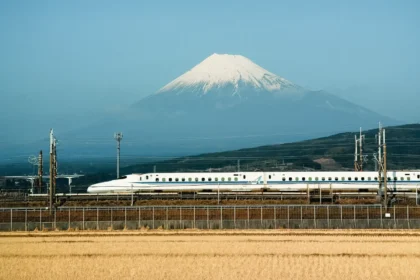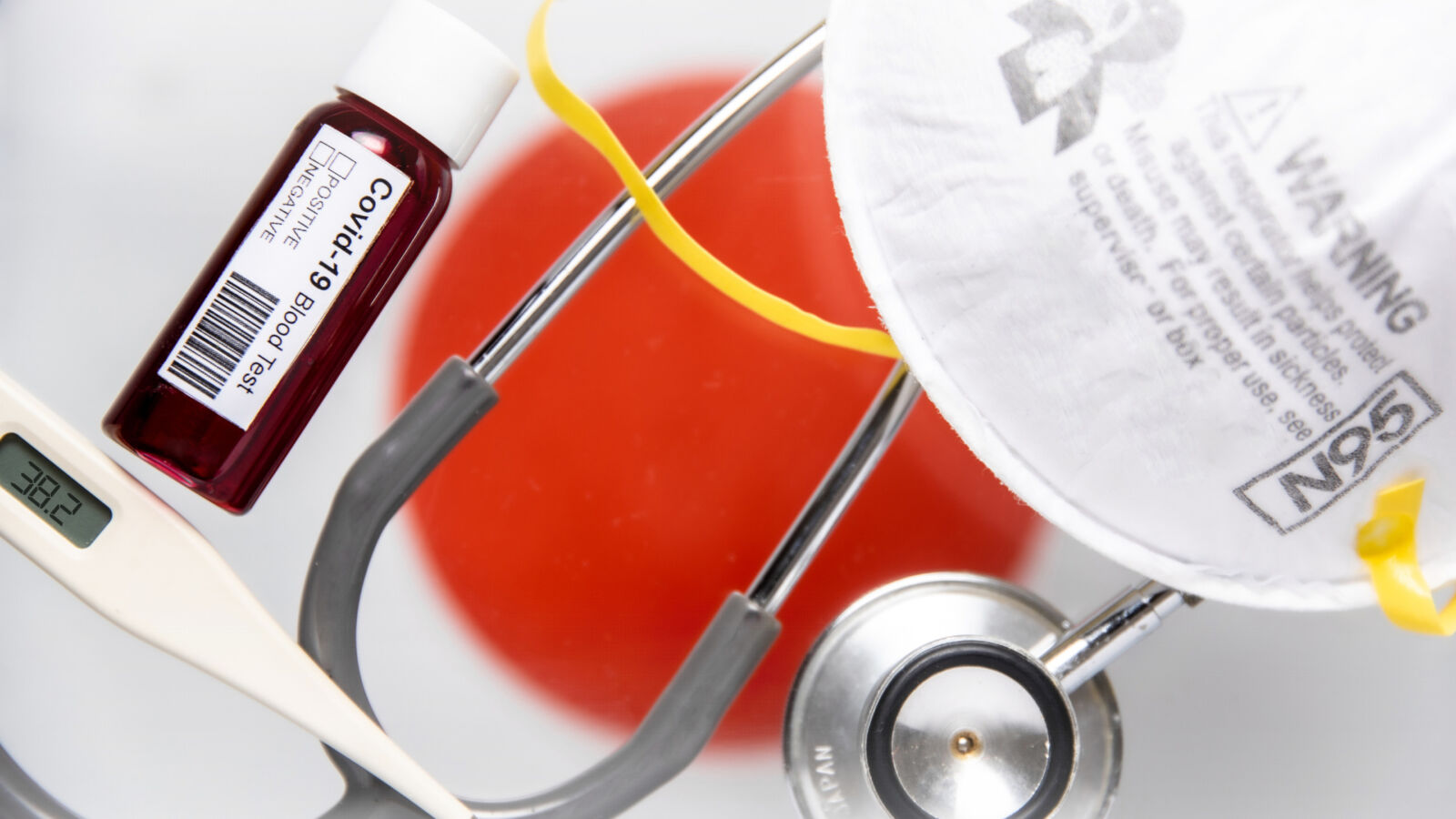
ผลกระทบของ COVID-19 ต่อการท่องเที่ยวระหว่างประเทศ และการเดินทางไปยังญี่ปุ่นนั้นรุนแรงมาก โดยได้เปลี่ยนแปลงทั้งพลวัตในระยะสั้นและแนวโน้มในระยะยาวของภาคส่วนนี้ ณ ปัจจุบัน อุตสาหกรรมการท่องเที่ยวของญี่ปุ่นกำลังเผชิญกับการเปลี่ยนแปลงที่สำคัญหลายประการในด้านพฤติกรรมการเดินทาง การปรับตัวด้านนโยบาย และการเปลี่ยนแปลงด้านโครงสร้างพื้นฐาน
หน้าเว็บไซต์ต่อไปนี้ มีวัตถุประสงค์เพื่อให้ข้อมูลที่ถูกต้องและเกี่ยวข้องว่า COVID-19 ส่งผลกระทบต่อการเดินทางจากต่างประเทศมายังญี่ปุ่นอย่างไร หน้าเว็บนี้มีข้อมูลต่อไปนี้:
-- โควิด-19 มีอิทธิพลในปัจจุบัน ต่อการเดินทางระหว่างประเทศมายังญี่ปุ่นอย่างไรบ้าง?
-- ภาพรวมการตอบสนองของญี่ปุ่นต่อการระบาดของ โควิด-19
-- ภาวะฉุกเฉิน vs ภาวะฉุกเฉินกึ่งวิกฤต
-- โครงการฉีดวัคซีนโควิด-19 ของญี่ปุ่น
-- พาสปอร์ตวัคซีน โควิด-19 ของญี่ปุ่น
-- ไทม์ไลน์สถานการณ์ โควิด-19 ในญี่ปุ่น
ข้อมูลในหน้านี้จัดทำขึ้นสำหรับนักเดินทางต่างประเทศ โดยนำมาจากแหล่งข้อมูลที่เชื่อถือได้และมีชื่อเสียง มีวัตถุประสงค์เพื่อให้เป็นภาพรวมของเหตุการณ์ที่เกิดขึ้นและกำลังเกิดขึ้นในญี่ปุ่น เพื่อช่วยให้คุณตัดสินใจเกี่ยวกับการเดินทางได้อย่างชาญฉลาด ดังนั้น จึงไม่มีการให้ข้อมูลที่ไม่เกี่ยวข้องกับนักเดินทางต่างประเทศโดยเฉพาะ เช่น ข้อมูลเกี่ยวกับเงินช่วยเหลือจากรัฐบาล
โควิด-19 มีอิทธิพลในปัจจุบัน ต่อการเดินทางระหว่างประเทศมายังญี่ปุ่นอย่างไรบ้าง?
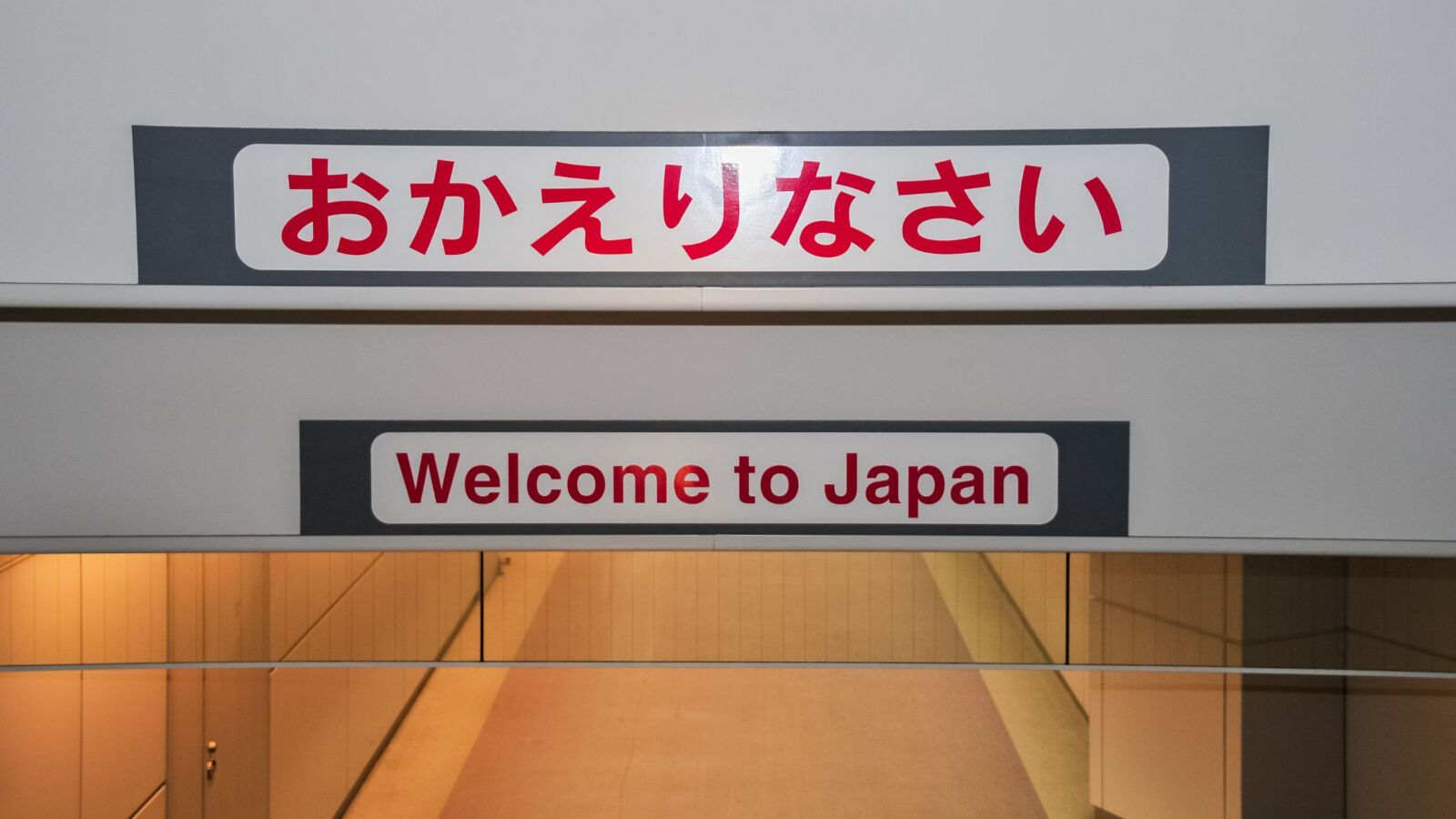
การเปลี่ยนแปลงพฤติกรรมการเดินทาง :
โรคระบาดทำให้รูปแบบการเดินทางในญี่ปุ่นเปลี่ยนไปอย่างสิ้นเชิง โดยเปลี่ยนมาท่องเที่ยวภายในประเทศอย่างชัดเจน ซึ่งแนวโน้มดังกล่าวเกิดขึ้นในประเทศอื่นๆ เช่นกัน พลเมืองและผู้อยู่อาศัยในญี่ปุ่นจำนวนมากหันไปท่องเที่ยวในพื้นที่ ส่งผลให้การท่องเที่ยวในชนบทและจุดหมายปลายทางที่ไม่ค่อยมีคนไปมากนักเติบโต อย่างไรก็ตาม การเปลี่ยนแปลงนี้ส่งผลให้มีการกำหนดนิยามของนักเดินทางต่างชาติใหม่ ด้วยการเพิ่มขึ้นของแรงงานทางไกล การเป็นคนเร่ร่อนทางดิจิทัล และการเข้าพักที่ยาวนานขึ้น นักท่องเที่ยวกลุ่มที่เพิ่มมากขึ้นในญี่ปุ่นจึงมีลักษณะเฉพาะคือชอบประสบการณ์การเดินทางที่ช้าลงและดื่มด่ำมากขึ้น โดยเฉพาะในพื้นที่ชนบทและพื้นที่ที่มีประชากรหนาแน่นน้อยกว่า
การท่องเที่ยวเพื่อสุขภาพและการท่องเที่ยวเพื่อ "ความเป็นอยู่ที่ดี" ได้รับความนิยมเพิ่มขึ้นอย่างรวดเร็วเช่นกัน นักท่องเที่ยวจำนวนมากที่เดินทางมาญี่ปุ่นกำลังมองหาประสบการณ์ที่ใส่ใจสุขภาพมากขึ้น เช่น การพักผ่อนเพื่อสุขภาพและการท่องเที่ยวที่เน้นธรรมชาติ ซึ่งสะท้อนให้เห็นถึงแนวโน้มของผู้บริโภคหลังการระบาดใหญ่ที่มุ่งเน้นไปที่การดูแลสุขภาพ สุขภาพจิต และการมีสติ
การฟื้นฟูเศรษฐกิจและโครงสร้างพื้นฐาน :
โครงสร้างพื้นฐานที่เกี่ยวข้องกับการท่องเที่ยวของญี่ปุ่น เผชิญกับการขาดทุนในระยะสั้นและการปรับตัวในระยะยาว การระบาดใหญ่ทำให้สายการบิน โรงแรม และผู้ประกอบการทัวร์รายใหญ่ต้องประเมินรูปแบบธุรกิจของตนใหม่ โดยหลายแห่งลดขนาดหรือปรับเปลี่ยนรูปแบบการให้บริการเพื่อรองรับลูกค้ากลุ่มเล็กที่คัดเลือกมาเป็นพิเศษ มาตรการเชิงรุกของรัฐบาล เช่น โปรแกรมอุดหนุน "Go To Travel" มีบทบาทสำคัญในการกระตุ้นการเดินทางภายในประเทศ แต่ยังทำให้เกิดคำถามเกี่ยวกับความยั่งยืนและความเท่าเทียมกันของโปรแกรมดังกล่าวในสภาพแวดล้อมหลังการระบาดใหญ่ด้วย
ในทางกลับกัน วิกฤตการณ์ดังกล่าวได้เร่งการเปลี่ยนแปลงทางดิจิทัลในโครงสร้างพื้นฐานด้านการท่องเที่ยวของญี่ปุ่น ระบบการชำระเงินแบบไร้สัมผัส บัตรผ่านสุขภาพดิจิทัล และตัวเลือกการเช็คอินทางไกลได้แพร่หลายมากขึ้น ซึ่งช่วยแก้ไขปัญหาด้านสุขภาพและปรับปรุงประสิทธิภาพของกระบวนการเดินทาง คาดว่าการผสานเทคโนโลยีเหล่านี้เข้าด้วยกันจะมีประโยชน์ต่ออุตสาหกรรมการท่องเที่ยวในระยะยาว ช่วยให้ผู้เยี่ยมชมจากต่างประเทศได้รับประสบการณ์ที่ราบรื่นยิ่งขึ้น
ความยั่งยืนและความยืดหยุ่นในด้านการท่องเที่ยว :
การระบาดใหญ่ ได้เน้นย้ำถึงความจำเป็นในการฟื้นตัวและยั่งยืนในภาคการท่องเที่ยวของญี่ปุ่น ส่งผลให้มีการเน้นย้ำแนวทางปฏิบัติที่ยั่งยืนมากขึ้น รวมถึงการส่งเสริมการท่องเที่ยวเชิงนิเวศและการลดการท่องเที่ยวมากเกินไปในเมืองใหญ่และจุดท่องเที่ยวสำคัญ มีความสนใจเพิ่มขึ้นในการใช้ประโยชน์จากทรัพยากรธรรมชาติของประเทศเพื่อส่งเสริมการท่องเที่ยวที่เป็นมิตรต่อสิ่งแวดล้อม โดยมีโครงการริเริ่มที่มุ่งสร้างประสบการณ์การเดินทางที่ยั่งยืนมากขึ้น นอกจากนี้ ยังมีการผลักดันอย่างเห็นได้ชัดในการปรับปรุงแผนเตรียมความพร้อมและการฟื้นฟูภัยพิบัติสำหรับภาคการท่องเที่ยว โดยรับทราบความเสี่ยงที่เพิ่มขึ้นของความปั่นป่วนทั่วโลกในอนาคต ไม่ว่าจะเป็นจากการระบาดใหญ่หรือการเปลี่ยนแปลงสภาพภูมิอากาศ
ภาพรวมการตอบสนองของญี่ปุ่น ต่อการระบาดของโควิด-19
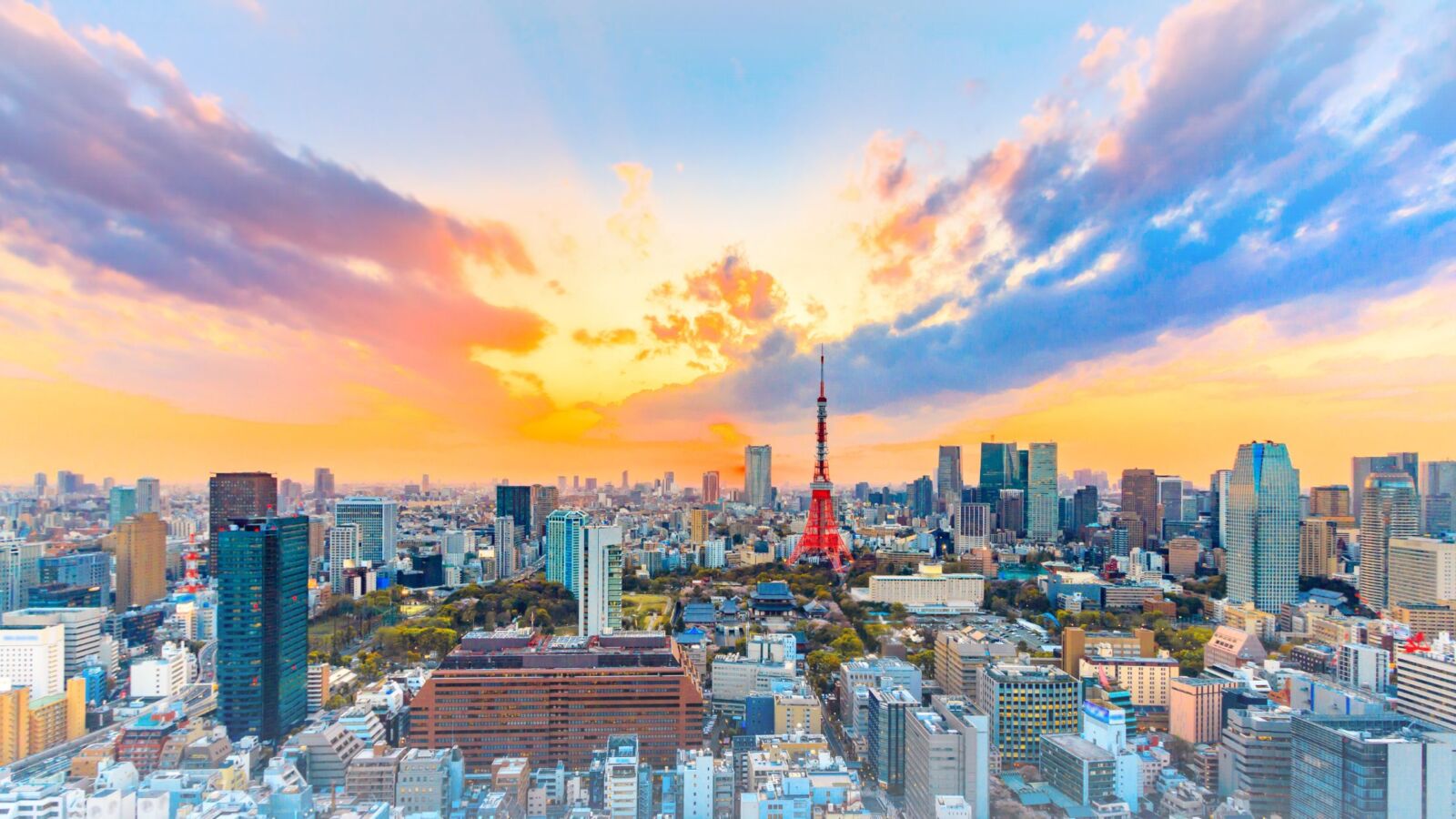
ญี่ปุ่นได้นำมาตรการต่างๆ มาใช้ทั้งในระดับชาติและระดับท้องถิ่น เพื่อป้องกันการแพร่ระบาดของ COVID-19 เพื่อทำความเข้าใจเกี่ยวกับการตอบสนองของญี่ปุ่น เราขอแนะนำให้อธิบายสั้นๆ เกี่ยวกับการบริหารประเทศ และที่สำคัญคือการแบ่งเขตการปกครองออกเป็น 47 จังหวัด การทำความเข้าใจว่าจังหวัดเหล่านี้คืออะไรและอยู่ที่ไหน รวมถึงมีการควบคุมอย่างไรนั้นมีความสำคัญต่อนักเดินทางระหว่างประเทศ เนื่องจากข้อกำหนดที่ใช้กับจังหวัดหนึ่งอาจไม่มีผลบังคับใช้กับอีกจังหวัดหนึ่งเมื่อเดินทางในช่วงที่เกิดภัยธรรมชาติหรือเหตุฉุกเฉินอื่นๆ
ภาพรวมการบริหารงานของญี่ปุ่น :
การบริหารของญี่ปุ่นแบ่งออกเป็น 3 ระดับ ได้แก่ ระดับชาติ ระดับจังหวัด และระดับเทศบาล ในระดับชาติ รัฐบาลญี่ปุ่นควบคุมประเทศจากรัฐสภาแห่งชาติในโตเกียว ญี่ปุ่นเป็นประเทศประชาธิปไตยที่มีการเลือกตั้งเป็นประจำเพื่อคัดเลือกตัวแทนและพรรครัฐบาล
ภายใต้รัฐบาลกลาง ญี่ปุ่นแบ่งออกเป็น 47 จังหวัด โดยมีขนาดและจำนวนประชากรแตกต่างกัน ฮอกไกโดเป็นจังหวัดที่ใหญ่ที่สุด ในขณะที่โตเกียวซึ่งเป็นจังหวัดที่เล็กเป็นอันดับสามมีประชากรมากที่สุด จากนั้นจังหวัดต่างๆ จะแบ่งย่อยออกเป็นหมวดหมู่เทศบาล เช่น เมือง เทศบาลเมือง เป็นต้น ซึ่งเป็นระดับการบริหารระดับที่สาม
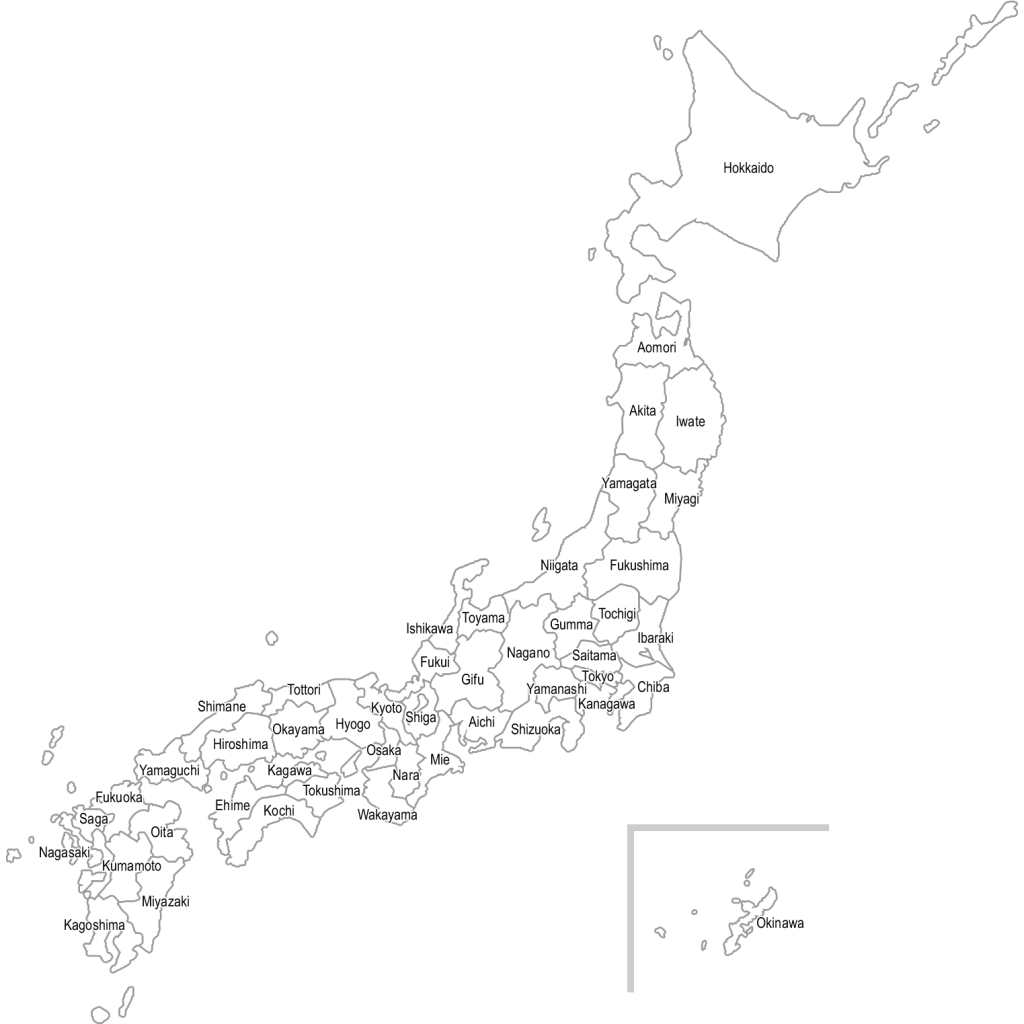
รัฐบาลกลางเป็นหน่วยงานบริหารที่มีอำนาจมากที่สุดในประเทศ อย่างไรก็ตาม รัฐธรรมนูญยังกำหนดให้แต่ละจังหวัดมีความรับผิดชอบอย่างมาก ซึ่งรวมถึงการศึกษา แรงงาน สวัสดิการสังคม และสุขภาพ แม้ว่าจะมีความแตกต่างกันในหน้าที่บริหารของแต่ละจังหวัด เช่น ภาษี โรงเรียน เงื่อนไขทางธุรกิจ เป็นต้น แต่ส่วนใหญ่ไม่มีผลกระทบต่อนักเดินทางระหว่างประเทศ
ที่น่าสังเกตก็คือรัฐบาลกลางจัดสรรเงินทุนให้กับจังหวัดต่างๆ มากถึง 60% ซึ่งสามารถนำไปใช้ตามวาระแห่งชาติได้ รวมถึงการปิดธุรกิจและสถานที่สาธารณะโดยประกาศ "ภาวะฉุกเฉิน"
สิ่งนี้เกี่ยวข้องกับนักท่องเที่ยวต่างประเทศอย่างไร?
1 / รัฐบาลกลางจะกำหนดว่าใครสามารถเดินทางเข้าประเทศญี่ปุ่นได้ เป็นเวลานานเท่าใด และมีข้อกำหนดต่างๆ เช่น ผู้ที่เดินทางเข้าประเทศญี่ปุ่นต้องปฏิบัติตามการกักกันตัว
2 / จังหวัดทั้ง 47 แห่ง มีความแตกต่างกันอย่างมากในด้านองค์ประกอบและการตอบสนองต่อสถานการณ์ฉุกเฉิน ดังที่เห็นได้ในช่วงการระบาดของ COVID-19 ข้อจำกัดที่บังคับใช้กับจังหวัดหนึ่งอาจไม่มีผลใช้กับอีกจังหวัดหนึ่งเสมอไป โดยเฉพาะอย่างยิ่งกับสถานะ "ภาวะฉุกเฉิน"
3 / จนถึงปัจจุบัน รัฐบาลญี่ปุ่นยังไม่ได้บังคับใช้มาตรการล็อกดาวน์ในพื้นที่ใด ๆ ของประเทศ ได้มีการประกาศสถานการณ์ฉุกเฉินในจังหวัดต่าง ๆ และทั่วประเทศเป็นระยะเวลาต่างกัน โดยมีการขอให้ปิดธุรกิจต่าง ๆ อย่างไรก็ตาม ญี่ปุ่นยังไม่เคยบังคับใช้มาตรการล็อกดาวน์แต่อย่างใด
ทำไมญี่ปุ่นไม่บังคับใช้การล็อคดาวน์?
เพื่อตอบสนองต่อการแพร่ระบาดของโรคโควิด-19 ในประเทศญี่ปุ่น รัฐบาลกลางได้แก้ไขกฎหมายที่มีอยู่เดิม - พระราชบัญญัติว่าด้วยมาตรการพิเศษต่อต้านไข้หวัดใหญ่ - เพื่อกำหนดและประกาศสถานการณ์ฉุกเฉิน โดยเริ่มใช้กับฮอกไกโดก่อน ตามด้วยโตเกียวและจังหวัดอื่นๆ อีกไม่กี่แห่ง ก่อนที่จะขยายไปทั่วประเทศในที่สุดเมื่อวันที่ 16 เมษายน 2020
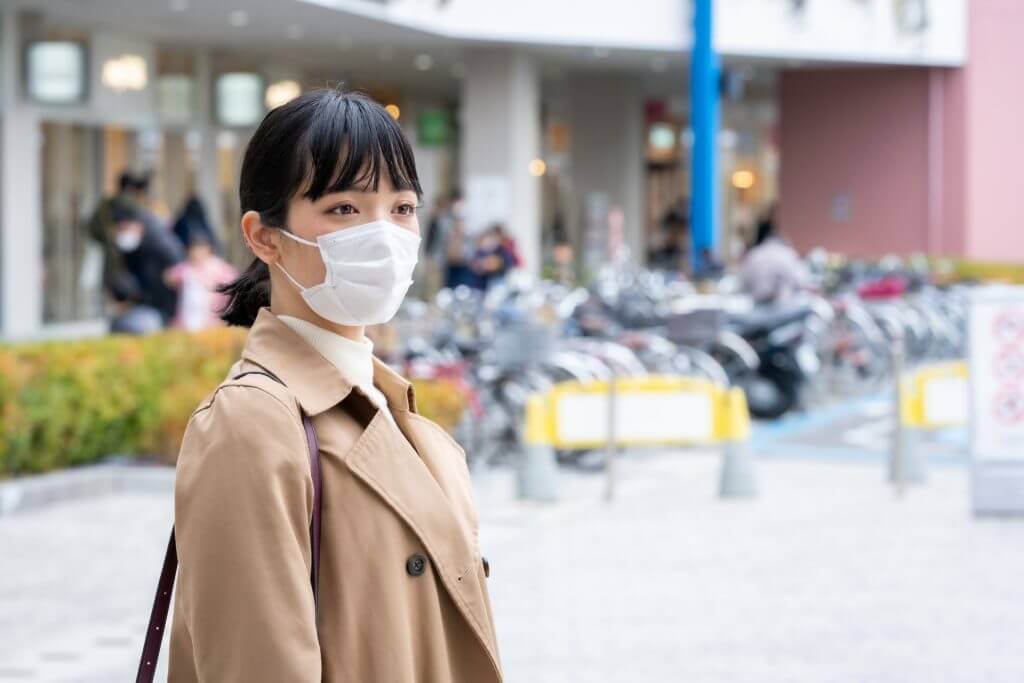
กฎหมายฉบับนี้ออกแบบมาเพื่อรับมือกับโรคไข้หวัดใหญ่สายพันธุ์ใหม่ โดยให้แนวทางในการขอให้ธุรกิจและสถานที่ต่างๆ ปิดทำการ แต่ไม่ได้ให้สิทธิในการบังคับใช้การปิดทำการ เนื่องจากกฎหมายฉบับนี้ไม่ได้ถือว่ามีความจำเป็นเมื่อมีการร่างขึ้นเพื่อรับมือกับโรคไข้หวัดใหญ่สายพันธุ์ใหม่ ดังนั้น กฎหมายฉบับปัจจุบันจึงไม่ให้อำนาจแก่รัฐบาลในการบังคับปิดธุรกิจและสถานที่ต่างๆ รวมทั้งไม่มีบทบัญญัติในการลงโทษผู้ที่เพิกเฉยต่อคำขอให้ปิดทำการ กักตัวอยู่แต่ในบ้าน เป็นต้น ด้วยเหตุนี้ ญี่ปุ่นจึงไม่เคยถูกบังคับให้ล็อกดาวน์ แต่กลับมุ่งเน้นไปที่การประกาศใช้ "ภาวะฉุกเฉิน" และ "ภาวะฉุกเฉินกึ่งวิกฤต" เพื่อความปลอดภัยของประชาชน
ภาวะฉุกเฉิน vs ภาวะฉุกเฉินกึ่งวิกฤต
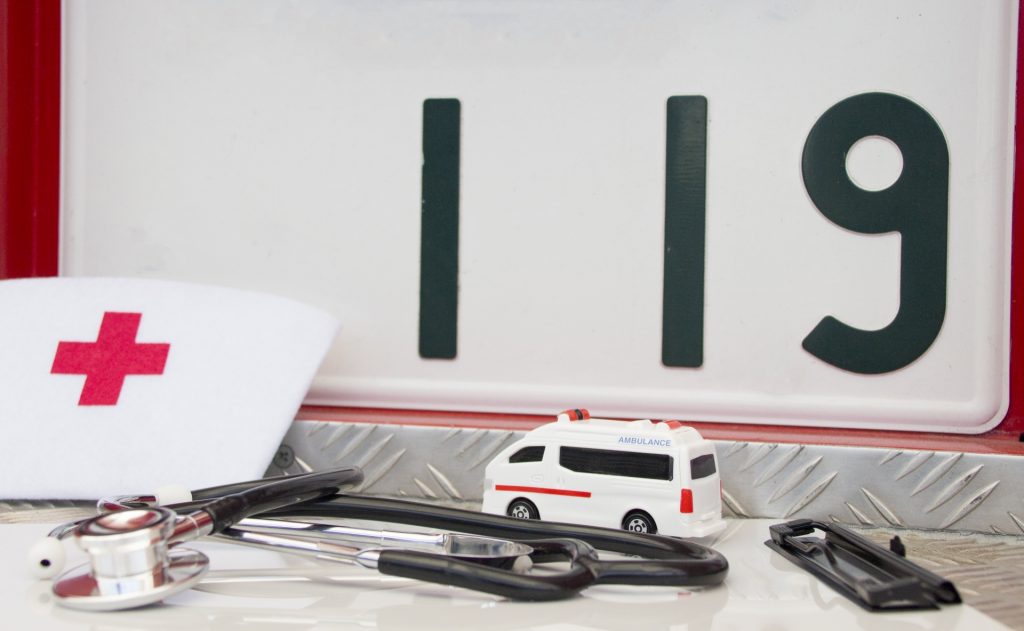
รัฐบาลกลางมีอำนาจในการประกาศ "ภาวะฉุกเฉิน" อย่างเป็นทางการ (SOE) ในจังหวัดใดจังหวัดหนึ่งจาก 47 จังหวัด ซึ่งจะต้องดำเนินการตามมาตรการจำกัดการเดินทางหรือการใช้ชีวิตประจำวัน เพื่อบรรเทาภัยพิบัติหรือปกป้องประชาชน เช่น จำกัดการแพร่ระบาดของโควิด-19
ภาวะฉุกเฉินที่เป็นทางการหรือเต็มรูปแบบ ดังที่เห็นในช่วงการระบาดของโควิด-19 ประกอบไปด้วยมาตรการต่างๆ เช่น การขอให้ประชาชนทำงานจากที่บ้านเมื่อทำได้ หลีกเลี่ยงการเดินทางที่ไม่จำเป็น ข้อจำกัดในเวลาเปิดทำการของธุรกิจ ข้อจำกัดหรือการห้ามสถานประกอบการบางแห่ง เช่น การเปิดบาร์และ/หรือบริการเครื่องดื่มแอลกอฮอล์ และข้อจำกัดหรือการห้ามจัดงานขนาดใหญ่
อำนาจในการประกาศสถานการณ์ฉุกเฉินเต็มรูปแบบอยู่ที่รัฐบาลกลาง ซึ่งสามารถทำได้โดยอิสระหรือตามคำขอของจังหวัดที่ได้รับผลกระทบ ข้อจำกัดที่บังคับใช้กับจังหวัดใดๆ ภายใต้รัฐวิสาหกิจเต็มรูปแบบนั้นเหมือนกัน อย่างไรก็ตาม รัฐบาลยังสามารถบังคับใช้ข้อจำกัดเฉพาะในพื้นที่เป้าหมายภายในจังหวัดได้ภายใต้สิ่งที่มักเรียกว่า "รัฐวิสาหกิจกึ่งฉุกเฉิน" ภายใต้รัฐวิสาหกิจกึ่งฉุกเฉิน ข้อจำกัดได้รับการออกแบบให้เหมาะสมกับพื้นที่เป้าหมายและมักใช้กับธุรกิจ เช่น ร้านอาหารและบาร์ ที่ได้รับการร้องขอให้ลดเวลาเปิดทำการและจำกัดหรือหยุดให้บริการเครื่องดื่มแอลกอฮอล์ รัฐวิสาหกิจกึ่งฉุกเฉินมักจะเกิดขึ้นก่อนหรือหลังการประกาศรัฐวิสาหกิจเต็มรูปแบบในจังหวัดที่ได้รับผลกระทบ
ในช่วงปี 2020 และ 2021 จังหวัดต่างๆ หลายแห่งในญี่ปุ่นอยู่ภายใต้รัฐวิสาหกิจเต็มรูปแบบและกึ่งรัฐวิสาหกิจ โดยทั้งประเทศอยู่ภายใต้รัฐวิสาหกิจเต็มรูปแบบถึงสองครั้ง
โครงการฉีดวัคซีนโควิด-19 ของญี่ปุ่น

โครงการฉีดวัคซีนในญี่ปุ่นเริ่มขึ้นในเดือนมีนาคม พ.ศ. 2564 โดยเริ่มจากบุคลากรทางการแพทย์และบุคลากรสำคัญอื่นๆ ก่อนจะขยายไปสู่ผู้ที่มีอายุ 65 ปีขึ้นไป และในที่สุดก็คือประชาชนทั่วไป
การเปิดตัวโครงการแตกต่างกันไปในแต่ละประเทศ โดยภูมิภาคที่มีลำดับความสำคัญสูง (เช่น พื้นที่ที่มีประชากรหนาแน่น เช่น โตเกียวและโอซาก้า) จะให้วัคซีนแก่ประชาชนทั่วไป ในขณะที่จังหวัดอื่นๆ ยังคงให้ความสำคัญกับกลุ่มเฉพาะเป็นพิเศษ
สอดคล้องกับหลายประเทศทั่วโลก ญี่ปุ่นใช้หนังสือเดินทางการฉีดวัคซีนแบบดิจิทัลเพื่อพยายามเปิดพรมแดนระหว่างประเทศอีกครั้ง
พาสปอร์ตวัคซีน โควิด-19 ของญี่ปุ่น
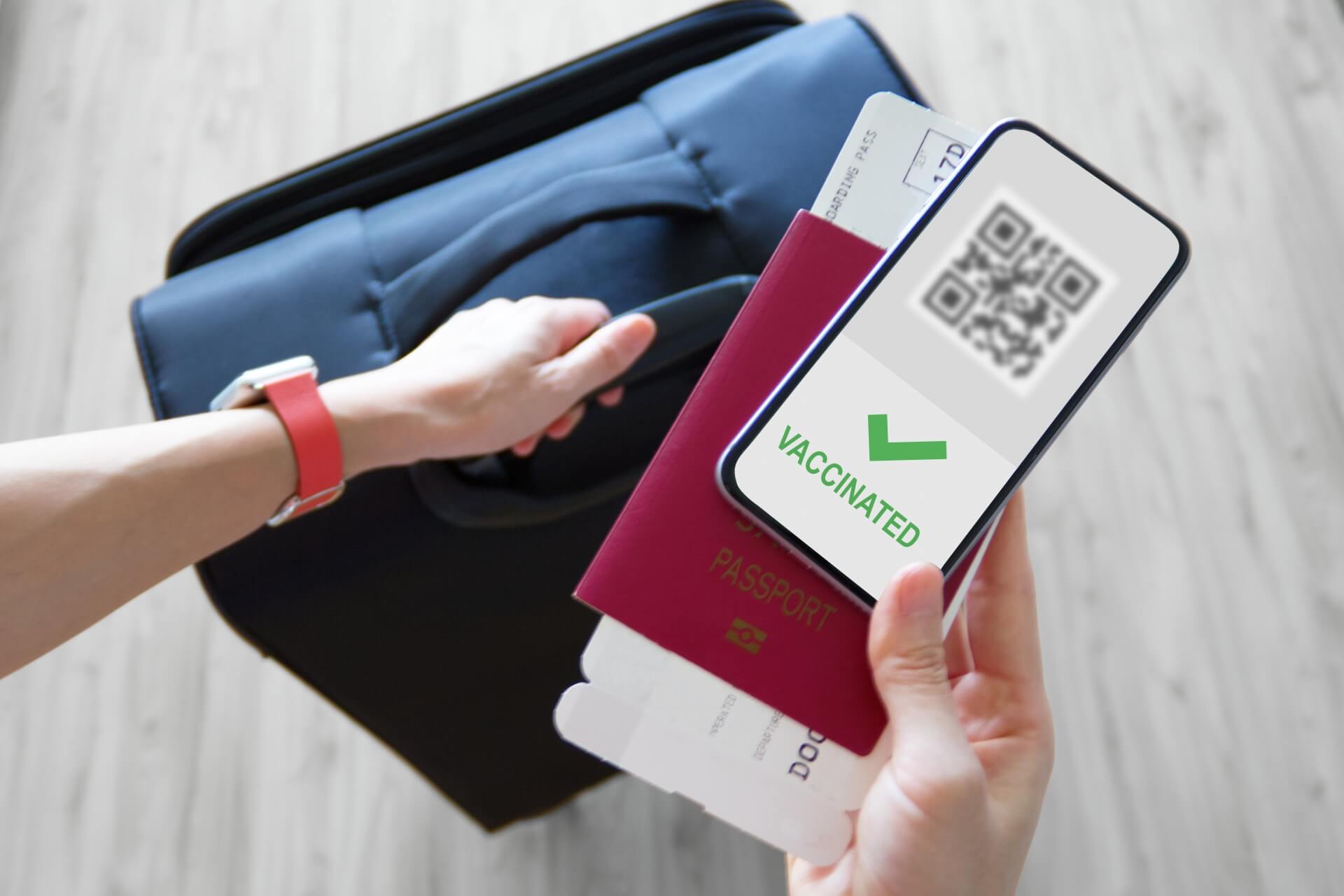
ญี่ปุ่นเปิดตัวแอปฉีดวัคซีน COVID-19 สำหรับชาวญี่ปุ่นที่เดินทางไปต่างประเทศในเดือนธันวาคม 2021 โดยแอปดังกล่าวมีชื่อว่า "新型コロナワクチン接種証明書アプリ" หรือ "ใบสมัครใบรับรองการฉีดวัคซีนโคโรน่าสายพันธุ์ใหม่" ซึ่งสามารถดาวน์โหลดได้ฟรี และเมื่อเปิดใช้งานแล้ว ผู้ใช้จะสามารถใช้งานได้โดยการสแกนบัตร "My Number" ของผู้ใช้ จากนั้นผู้ใช้จะดูประวัติการฉีดวัคซีนบนโทรศัพท์ได้ นอกจากนี้ ยังมีใบรับรองสำหรับเวอร์ชันภายในประเทศที่ใช้เป็นหลักฐานการฉีดวัคซีนที่ร้านอาหารและงานกิจกรรมต่างๆ ในขณะที่เวอร์ชันต่างประเทศสามารถใช้สำหรับการเดินทางระหว่างประเทศได้ หากผู้ใช้ต้องการใช้แอปนี้เพื่อเดินทางไปต่างประเทศ ผู้ใช้จะต้องกรอกรายละเอียดหนังสือเดินทางด้วย
สำหรับนักท่องเที่ยวต่างชาติที่เดินทางไปญี่ปุ่น ญี่ปุ่นได้เข้าร่วมโครงการ "Common Pass" โดยผู้เข้าร่วมโครงการจะใช้แอปพลิเคชันบนสมาร์ทโฟนเพื่อทดสอบ PCR จากนั้นจึงส่งผลการทดสอบไปยังห้องปฏิบัติการพร้อมทั้งรับผลการทดสอบเป็นลบผ่านแอปพลิเคชันบนโทรศัพท์ สายการบินทั่วโลก เช่น United Airlines, Cathay Pacific และ All Nippon Airways (ANA) ของญี่ปุ่นที่ตั้งใจจะเข้าร่วมโครงการก็ใช้ Common Pass เช่นกัน
ไทม์ไลน์สถานการณ์ โควิด-19 ในญี่ปุ่น
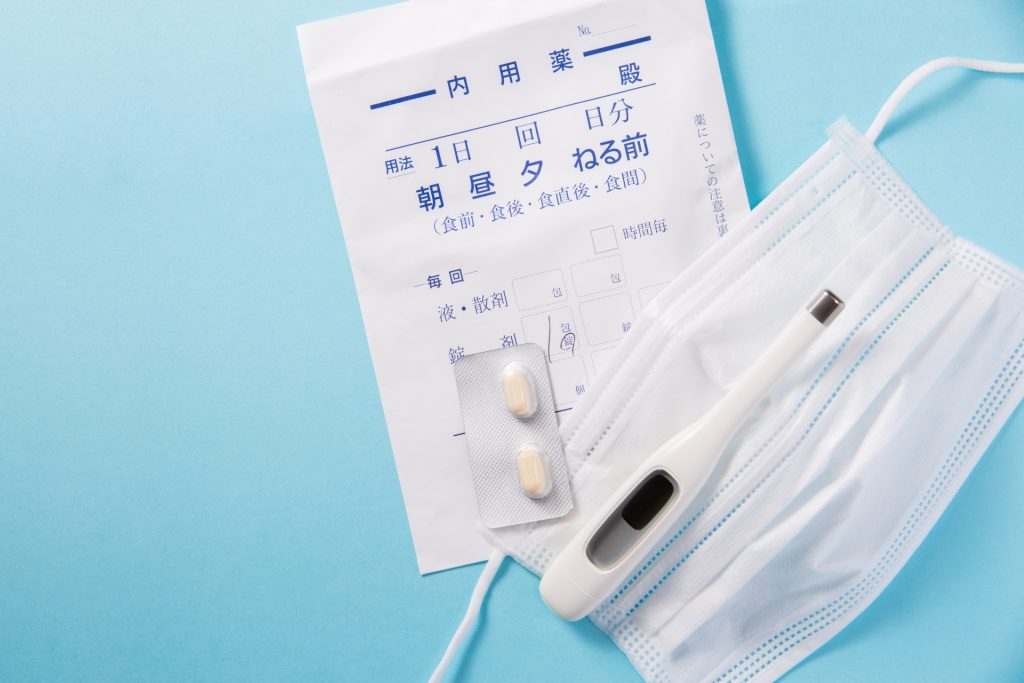
ไทม์ไลน์ต่อไปนี้มีวัตถุประสงค์เพื่อให้ภาพรวมที่ถูกต้องของสถานการณ์โควิด-19 ในญี่ปุ่นสำหรับนักเดินทางต่างชาติ:
10 ตุลาคม 2022: ตั้งแต่วันที่ 11 ตุลาคมเป็นต้นไป ญี่ปุ่นจะเปิดพรมแดนให้นักท่องเที่ยวต่างชาติเข้าประเทศได้อีกครั้ง โดยจะยกเลิกเพดานจำนวนผู้เดินทางเข้าประเทศต่อวัน และนำการเดินทางแบบ "ไม่ต้องมีวีซ่า" กลับมาอีกครั้งสำหรับหลายสัญชาติ นอกจากนี้ นักท่องเที่ยวจะไม่ต้องเข้ารับการตรวจหาเชื้อโควิด-19 ก่อนและหลังเดินทางมาถึงอีกต่อไป ตราบใดที่มีหลักฐานการฉีดวัคซีนอย่างน้อย 3 ครั้งและไม่มีอาการใดๆ เป็นเวลานานมากแล้วที่ญี่ปุ่นไม่พบนักท่องเที่ยวจำนวนมากเดินทางผ่านพรมแดน ทำให้ช่วงเวลานี้กลายเป็นช่วงเวลาแห่งการต้อนรับสำหรับใครหลายๆ คน ยินดีต้อนรับกลับมา!
3 ตุลาคม 2022: จำนวนผู้ป่วยโควิด-19 ในญี่ปุ่นยังคงลดลงอย่างต่อเนื่อง โดยเมื่อวันเสาร์ที่ 1 ตุลาคม มีรายงานผู้ป่วย 35,644 รายทั่วประเทศ ซึ่งลดลงประมาณ 3,600 รายจากสัปดาห์ก่อนหน้า การลดลงอย่างต่อเนื่องของจำนวนผู้ป่วยเกิดขึ้นก่อนเวลาเพียงหนึ่งสัปดาห์ก่อนที่พรมแดนระหว่างประเทศจะเปิดให้ผู้ถือหนังสือเดินทางที่มีสิทธิ์ "ไม่ต้องขอวีซ่า" มีผลบังคับใช้ในวันที่ 11 ตุลาคม
26 กันยายน 2022: ญี่ปุ่นรายงานผู้ติดเชื้อโควิด-19 รายใหม่ 39,218 รายในวันเสาร์ ลดลงประมาณ 31,000 รายจากสัปดาห์ก่อน การลดลงอย่างต่อเนื่องของผู้ติดเชื้อเกิดขึ้นในขณะที่ญี่ปุ่นเตรียมเปิดพรมแดนอีกครั้งสำหรับนักท่องเที่ยวอิสระในวันที่ 11 ตุลาคม ซึ่งในเวลานั้นจะมีการเปิดตัวโครงการอุดหนุนการท่องเที่ยวภายในประเทศใหม่ โดยใช้ชื่อว่า "National Travel Discount" ซึ่งจะมาแทนที่โครงการ "Go To Travel" ที่ถูกระงับไปนานแล้ว
23 กันยายน 2022: นายกรัฐมนตรีคิชิดะ ฟูมิโอะประกาศว่าตั้งแต่วันที่ 11 ตุลาคมเป็นต้นไป จะมีการยกเลิกการจำกัดจำนวนผู้เดินทางเข้าประเทศญี่ปุ่นต่อวัน ขณะเดียวกัน ผู้เดินทางอิสระจากประเทศที่มีสิทธิ์จะกลับมาเดินทางโดยไม่ต้องมีวีซ่าอีกครั้ง ผู้ที่เดินทางเข้าประเทศญี่ปุ่นจะต้องแสดงหลักฐานการฉีดวัคซีน COVID-19 อย่างน้อย 3 ครั้งเพื่อส่งผลการทดสอบ COVID-19 ที่เป็นลบภายใน 72 ชั่วโมงก่อนการเดินทาง โดยมีผลตั้งแต่วันที่ 11 ตุลาคมเป็นต้นไป ญี่ปุ่นจะเปิดให้การท่องเที่ยวได้อีกครั้ง ยินดีต้อนรับกลับมา!
12 กันยายน 2022: เมื่อวันศุกร์ที่ผ่านมา จำนวนผู้ป่วยโควิด-19 ที่ได้รับการยืนยันในญี่ปุ่นนับตั้งแต่เริ่มมีการระบาดใหญ่พุ่งสูงเกิน 20,000,000 ราย ประเทศยังคงเผชิญกับการระบาดระลอกที่ 7 โดยจำนวนผู้ป่วยลดลงแต่ยังคงอยู่ในระดับสูง โดยมีผู้ติดเชื้อรายใหม่ 99,491 รายในวันศุกร์ และจำนวนผู้ป่วยทั้งหมดเพิ่มขึ้นเป็นสองเท่าในเวลาไม่ถึง 2 เดือน นอกจากนี้ จำนวนผู้เสียชีวิตยังเพิ่มขึ้นอีกด้วย โดยมีผู้เสียชีวิตมากกว่า 42,000 รายนับตั้งแต่เริ่มมีการระบาดใหญ่
12 กันยายน 2022: หลังจากมีการเปลี่ยนแปลงข้อกำหนดการเข้าประเทศสำหรับนักท่องเที่ยวเมื่อสัปดาห์ที่แล้ว และปรับเพิ่มเพดานการเดินทางรายวันจาก 20,000 เป็น 50,000 คน มีรายงานออกมาว่าเพดานการเดินทางฉบับแก้ไขนี้อาจมีผลบังคับใช้เพียงช่วงเวลาสั้นๆ เท่านั้น แม้ว่าจะยังไม่มีการประกาศอย่างเป็นทางการ แต่โฆษกของรัฐบาลได้แสดงความคิดเห็นว่าเพดานการเดินทางอาจถูกยกเลิกใน "อนาคตอันใกล้" อาจเป็นอย่างเร็วที่สุดในฤดูใบไม้ร่วงหรือฤดูหนาว สิ่งสำคัญคือต้องทราบว่ากรอบเวลาดังกล่าวดูมีแนวโน้มดีเกินไป และยังไม่มีการประกาศอย่างเป็นทางการ
5 กันยายน 2022: รัฐบาลได้ประกาศเพิ่มเติมเกี่ยวกับการผ่อนปรนข้อจำกัดด้านการท่องเที่ยวในญี่ปุ่นที่รออยู่ ณ วันพุธที่ 7 กันยายนนี้ นักท่องเที่ยวต่างชาติสามารถเดินทางเข้าประเทศญี่ปุ่นได้ตราบเท่าที่ได้รับการฉีดวัคซีน COVID-19 อย่างน้อย 3 ครั้งหรือเข้ารับการตรวจหาเชื้อโควิด-19 ก่อนเดินทาง ยินยอมปฏิบัติตามมาตรการป้องกัน COVID รวมถึงการเว้นระยะห่างทางสังคมและการสวมหน้ากากอนามัยในพื้นที่จำกัด และจองแพ็คเกจท่องเที่ยวซึ่งรวมถึงเที่ยวบินและที่พักทั้งหมดผ่านตัวแทนท่องเที่ยวที่จดทะเบียนในญี่ปุ่น โดยพื้นฐานแล้ว ตัวแทนท่องเที่ยวจะทำหน้าที่เป็นผู้สนับสนุนในการเชิญชวนนักท่องเที่ยวให้เดินทางเข้าประเทศญี่ปุ่น อย่างไรก็ตาม นักท่องเที่ยวไม่จำเป็นต้องจองทัวร์แบบมีไกด์นำเที่ยวอีกต่อไป ซึ่งหมายความว่าเมื่อเดินทางมาถึงประเทศญี่ปุ่นแล้ว นักท่องเที่ยวจะมีอิสระอย่างแท้จริงที่จะทำในสิ่งที่ต้องการตราบใดที่ปฏิบัติตามกำหนดการที่พักที่ตกลงไว้กับตัวแทนท่องเที่ยว นอกจากนี้ นักท่องเที่ยวยังต้องยื่นคำร้องขอและได้รับวีซ่าล่วงหน้าก่อนการเดินทาง
31 สิงหาคม 2022: นายกรัฐมนตรีคิชิดะประกาศว่าญี่ปุ่นจะยกเลิกข้อจำกัดจำนวนผู้มาเยือนรายวันเป็น 50,000 คนตั้งแต่วันที่ 7 กันยายนเป็นต้นไป นอกจากนี้ ญี่ปุ่นยังเตรียมผ่อนปรนข้อจำกัดด้านการท่องเที่ยวโดยอนุญาตให้นักท่องเที่ยวที่ซื้อแพ็กเกจทัวร์แบบไม่มีไกด์นำเที่ยวเข้าประเทศได้ อย่างไรก็ตาม ยังไม่มีข้อมูลเพิ่มเติมหรือประกาศอย่างเป็นทางการเกี่ยวกับเรื่องนี้ เราจะอัปเดตหน้านี้เมื่อมีข้อมูลเพิ่มเติม
29 สิงหาคม 2022: นายกรัฐมนตรีคิชิดะ ฟูมิโอะ ของญี่ปุ่น ประกาศว่าตั้งแต่วันที่ 7 กันยายนเป็นต้นไป ผู้ที่เดินทางเข้าประเทศญี่ปุ่นจะไม่จำเป็นต้องเข้ารับการตรวจหาเชื้อโควิด-19 ก่อนเดินทางอีกต่อไป ตราบใดที่สามารถแสดงหลักฐานการฉีดวัคซีนอย่างน้อย 3 ครั้งได้ นอกจากนี้ เขายังประกาศด้วยว่าจะยกเลิกเพดานจำนวนผู้เดินทางมาถึงต่อวันจาก 20,000 คน แต่ไม่ได้ยืนยันว่าเพดานใหม่จะเป็นเท่าใด อย่างไรก็ตาม มีการคาดเดากันอย่างกว้างขวางว่าเพดานใหม่จะอยู่ที่ 50,000 คนต่อวัน และข้อจำกัดด้านการท่องเที่ยวจะผ่อนคลายลงในเร็วๆ นี้ อย่างไรก็ตาม สิ่งสำคัญคือต้องทราบว่าญี่ปุ่นยังไม่เปิดให้นักท่องเที่ยวอิสระเข้า
29 สิงหาคม 2022: เมื่อวันอาทิตย์ที่ผ่านมา ญี่ปุ่นได้ยืนยันผู้ติดเชื้อ COVID-19 รายใหม่ 157,817 ราย ซึ่งลดลงประมาณ 68,000 รายจากสัปดาห์ก่อน โดยในจำนวนนี้ มีรายงานผู้ติดเชื้อ 15,834 รายในโตเกียว ซึ่งลดลงประมาณ 8,900 รายจากสัปดาห์ก่อน โดยมีผู้ติดเชื้อ 40 รายที่อาการรุนแรง
24 สิงหาคม 2022: รัฐบาลกำลังพิจารณาเปิดพรมแดนให้ผู้เดินทางอิสระเข้าประเทศ ซึ่งดูเหมือนว่าจะเป็นการพัฒนาในเชิงบวก โดยต้องจองการเดินทางผ่านบริษัททัวร์ ปัจจุบัน นักท่องเที่ยวสามารถเดินทางไปญี่ปุ่นเพื่อการท่องเที่ยวได้ แต่สามารถทำได้เฉพาะเมื่อเข้าร่วมทัวร์นำเที่ยวที่ดำเนินการโดยบริษัททัวร์ที่ได้รับการอนุมัติเท่านั้น ทัวร์ดังกล่าวซึ่งเริ่มต้นขึ้นในเดือนมิถุนายน ได้รับความนิยมน้อยมากเนื่องจากข้อจำกัดที่บังคับใช้กับนักท่องเที่ยว เช่น ต้องมีไกด์ไปด้วย ต้องสวมหน้ากากอนามัย ตรวจวัดอุณหภูมิร่างกายเป็นประจำ และเคลื่อนไหวได้จำกัด หวังว่าการผ่อนปรนข้อกำหนดที่เข้มงวดดังกล่าวจะทำให้การท่องเที่ยวระหว่างประเทศเพิ่มขึ้นอย่างมีนัยสำคัญเป็นครั้งแรกนับตั้งแต่เริ่มมีการระบาด
24 สิงหาคม 2022: แม้ว่าจะยังไม่มีการประกาศอย่างเป็นทางการ แต่มีรายงานว่าญี่ปุ่นจะยกเลิกข้อกำหนดที่ผู้ที่เดินทางเข้าประเทศจะต้องตรวจ COVID-19 ก่อนเดินทางในเร็วๆ นี้ มีรายงานว่านักเดินทางจะได้รับการยกเว้นจากข้อกำหนดนี้หากสามารถแสดงหลักฐานการฉีดวัคซีน 3 ครั้งขึ้นไป ขณะเดียวกัน รัฐบาลกำลังพิจารณาปรับเพิ่มเพดานจำนวนผู้เดินทางมาถึงระหว่างประเทศจาก 20,000 คนเป็น 50,000 คนต่อวัน ยังไม่มีการประกาศอย่างเป็นทางการเกี่ยวกับการเปลี่ยนแปลงที่อาจเกิดขึ้นนี้ แต่มีรายงานว่าอาจเกิดขึ้นเร็วที่สุดในเดือนหน้า
22 สิงหาคม 2022: นายกรัฐมนตรีญี่ปุ่น คิชิดะ ฟูมิโอะ ตรวจพบว่าติดเชื้อโควิด-19 เมื่อวันอาทิตย์ โดยรายงานว่าอาการของเขาไม่รุนแรง โดยในวันศุกร์ที่ผ่านมา ญี่ปุ่นรายงานผู้ติดเชื้อโควิด-19 รายใหม่มากกว่า 260,000 ราย ซึ่งเป็นจำนวนสูงสุดในวันเดียวนับตั้งแต่เกิดการระบาด และถือเป็นวันที่สามติดต่อกันที่ญี่ปุ่นรายงานผู้ติดเชื้อมากกว่า 250,000 ราย ญี่ปุ่นยังคงได้รับผลกระทบจากโควิด-19 ระลอกที่ 7 โดยคาดว่าอัตราการติดเชื้อจะลดลงในอีกไม่กี่สัปดาห์ข้างหน้านี้ เนื่องจากวันหยุดฤดูร้อนใกล้เข้ามาแล้ว
15 สิงหาคม 2022: ญี่ปุ่นรายงานผู้ติดเชื้อโควิด-19 รายใหม่ 183,608 รายในวันเสาร์ ลดลงประมาณ 43,800 รายจากสัปดาห์ก่อนหน้า โดยเป็นจำนวนสูงสุดนับตั้งแต่เกิดการระบาดของโควิด-19 ระลอกที่ 7 ติดต่อกัน ซึ่งถือเป็นจำนวนผู้ติดเชื้อรายวันสูงสุดนับตั้งแต่เกิดการระบาด ผลกระทบต่อเนื่องของโควิด-19 ระลอกที่ 7 ยังคงส่งผลไปทั่วประเทศ ขณะที่ช่วงวันหยุดฤดูร้อนถึงจุดสูงสุด โดยมีผู้คนหลายล้านคนเดินทางท่องเที่ยวในช่วงสัปดาห์โอบ้ง
8 สิงหาคม 2022: รัฐบาลเตรียมเสนอวัคซีนป้องกัน COVID-19 ใหม่ในช่วงเดือนตุลาคมเป็นต้นไป โดยมุ่งเป้าไปที่สายพันธุ์โอไมครอน ซึ่งเป็นสาเหตุของการเพิ่มขึ้นของจำนวนผู้ติดเชื้อในปัจจุบัน วัคซีนนี้พัฒนาโดยบริษัท Pfizer และ Moderna โดยผสมผสานส่วนประกอบของวัคซีนปัจจุบันเข้ากับส่วนประกอบที่ได้จากซับไทป์ BA.1 แม้ว่าวัคซีนจะยังไม่ได้รับการอนุมัติ แต่รัฐบาลอยู่ระหว่างการหารือเกี่ยวกับวิธีการแนะนำวัคซีนและผู้ที่มีสิทธิ์ได้รับวัคซีน
1 สิงหาคม 2022: ญี่ปุ่นรายงานผู้ติดเชื้อ COVID-19 รายใหม่ 222,037 รายในวันเสาร์ ตามด้วยผู้ติดเชื้อ 197,792 รายในวันอาทิตย์ โดยรวมถึงผู้ติดเชื้อในโตเกียว 31,541 ราย โอซาก้า 16,743 ราย คานากาวะ 15,088 ราย และไซตามะ 13,690 ราย จังหวัดอื่นๆ อีกหลายจังหวัดยังคงพบผู้ติดเชื้อและมีจำนวนเพิ่มขึ้น รัฐบาลยังคงไม่เต็มใจที่จะกำหนดมาตรการควบคุมการเดินทางใหม่ อย่างไรก็ตาม ได้ประกาศว่ารัฐบาลของแต่ละจังหวัดจะได้รับอนุญาตให้ประกาศมาตรการของตนเองเพื่อรับมือกับการแพร่ระบาดของไวรัส BA.5 โอไมครอนที่ติดต่อได้ นอกจากนี้ รัฐบาลยังพิจารณาแก้ไขโปรโตคอลการรายงานเพื่อลดภาระของโรงพยาบาลและสถานพยาบาลอื่นๆ เนื่องจากไวรัส BA.5 แพร่ระบาดได้สูง แต่มีแนวโน้มว่าจะไม่ส่งผลให้เกิดอาการป่วยรุนแรง รัฐบาลระบุว่าจะมีการหารือเพิ่มเติมเกี่ยวกับประเด็นนี้เมื่อจำนวนผู้ติดเชื้อที่เพิ่มขึ้นในปัจจุบันลดลง
25 กรกฎาคม 2022: เมื่อวันเสาร์ที่ผ่านมา ญี่ปุ่นพบผู้ติดเชื้อโควิด-19 รายใหม่มากกว่า 200,000 ราย เป็นครั้งแรกที่มียอดผู้ติดเชื้อทะลุ 30,000 รายในวันเดียว โดยพบผู้ติดเชื้อ 32,698 รายในกรุงโตเกียว ซึ่งเป็นวันที่สามติดต่อกันที่กรุงโตเกียวมีผู้ติดเชื้อเกิน 30,000 ราย และมียอดผู้ติดเชื้อรายวันสูงสุดใน 17 จังหวัดจากทั้งหมด 47 จังหวัดของประเทศ การเพิ่มขึ้นอย่างต่อเนื่องนี้เกิดจากไวรัส BA.5 โอไมครอนที่แพร่ระบาดได้สูง รัฐบาลได้เรียกร้องให้ประชาชนใช้ "ความระมัดระวังในระดับสูงสุด" แต่ได้ระบุว่าขณะนี้ยังไม่มีการพิจารณาจำกัดการเดินทาง
20 กรกฎาคม 2022: ญี่ปุ่นกำลังเผชิญกับการระบาดระลอกที่ 7 ของ COVID-19 แต่จนถึงขณะนี้ รัฐบาลยังไม่มีการประกาศแผนบังคับใช้มาตรการใหม่ เมื่อวันอาทิตย์ มีรายงานผู้ติดเชื้อรายใหม่มากกว่า 105,000 รายทั่วประเทศ ซึ่งเกือบสองเท่าของยอดเมื่อสัปดาห์ก่อน และเป็นวันที่สามติดต่อกันที่ผู้ติดเชื้อรายใหม่ทะลุ 100,000 ราย ในจำนวนนี้ 17,790 รายอยู่ในโตเกียว โดย 129 รายอยู่ในอาการรุนแรง การเพิ่มขึ้นอย่างรวดเร็วของจำนวนผู้ติดเชื้อเกิดจากการแพร่กระจายของไวรัส BA.5 โอไมครอนซึ่งเป็นสายพันธุ์ย่อยที่ติดต่อได้ง่าย
11 กรกฎาคม 2022: ญี่ปุ่นรายงานผู้ติดเชื้อโควิด-19 รายใหม่ 54,068 รายในวันอาทิตย์ ซึ่งเพิ่มขึ้นมากกว่าสองเท่าเมื่อเทียบกับสัปดาห์ก่อนหน้า นอกจากนี้ยังถือเป็นวันที่ 20 ติดต่อกันที่ตัวเลขผู้ติดเชื้อเพิ่มขึ้น โดยโตเกียวมีผู้ติดเชื้อ 9,482 ราย ซึ่งเป็นวันที่ 23 ติดต่อกันที่กรุงโตเกียวพบผู้ติดเชื้อเพิ่มขึ้น ตัวเลขดังกล่าวมาจากการสร้างแบบจำลองที่บ่งชี้ว่าโตเกียวอาจพบผู้ติดเชื้อรายวัน 18,000 รายขึ้นไปภายในสิ้นเดือนกรกฎาคม
4 กรกฎาคม 2022: ญี่ปุ่นรายงานผู้ป่วยโควิด-19 รายใหม่ 24,903 รายในวันเสาร์ เพิ่มขึ้น 8,316 รายจากวันเดียวกันเมื่อสัปดาห์ก่อน ถือเป็นวันที่ 12 ติดต่อกันที่จำนวนผู้ป่วยเพิ่มขึ้นทั่วประเทศ โดยในจำนวนนี้ มีรายงานผู้ป่วย 3,616 รายในโตเกียว เพิ่มขึ้น 1,450 ราย และเป็นวันที่ 15 ติดต่อกันที่จำนวนผู้ป่วยเพิ่มขึ้น
27 มิถุนายน 2022: ญี่ปุ่นรายงานผู้ติดเชื้อโควิด-19 รายใหม่ 14,238 รายเมื่อวันอาทิตย์ ซึ่งเพิ่มขึ้นกว่า 1,000 รายจากสัปดาห์ก่อนหน้า โดยในจำนวนนี้ 2,004 รายพบที่โตเกียว ซึ่งเพิ่มขึ้น 382 รายจากสัปดาห์ก่อนหน้า ถือเป็นวันที่ 9 ติดต่อกันที่จำนวนผู้ติดเชื้อเพิ่มขึ้นจากสัปดาห์ก่อนหน้า โดยเกิดขึ้นในขณะที่สนามบินภูมิภาคอีก 3 แห่งเตรียมเปิดให้บริการเที่ยวบินระหว่างประเทศอีกครั้ง โดยสนามบินเซ็นได ฮิโรชิม่า และทาคามัตสึจะเริ่มรับเที่ยวบินระหว่างประเทศ รวมถึงศูนย์กลางสำคัญอื่นๆ เช่น สนามบินนาฮะในโอกินาว่า และสนามบินนิวชิโตเสะในฮอกไกโด ซึ่งมีกำหนดเปิดให้บริการอีกครั้งในช่วงปลายเดือนมิถุนายน
20 มิถุนายน 2022: มีรายงานว่ามีผู้ยื่นคำร้องขอเดินทางไปญี่ปุ่นด้วยทัวร์ 1,300 ราย ตามโครงการเปิดพรมแดนสำหรับการท่องเที่ยวของรัฐบาล แต่เฉพาะผู้ที่เดินทางด้วยทัวร์ที่ได้รับอนุญาตเท่านั้น ทัวร์ที่ได้รับการอนุมัติรอบแรกมาถึงเมื่อวันพุธ ผู้เข้าร่วมต้องปฏิบัติตามมาตรการป้องกันการติดเชื้ออย่างเคร่งครัด รวมถึงการสวมหน้ากากอนามัยตลอดเวลา ใช้เจลล้างมือบ่อยๆ ปฏิบัติตามการเว้นระยะห่างทางสังคม เป็นต้น หากไม่ปฏิบัติตาม ผู้เข้าร่วมอาจถูกขอให้ออกจากญี่ปุ่น กฎที่เข้มงวดดังกล่าวได้รับการวิพากษ์วิจารณ์อย่างกว้างขวางในอุตสาหกรรมการท่องเที่ยว และมีแนวโน้มที่จะจำกัดจำนวนผู้ที่ยื่นคำร้องขอเดินทางไปญี่ปุ่น
20 มิถุนายน 2022: ญี่ปุ่นรายงานผู้ป่วยโควิด-19 รายใหม่ 14,837 รายในวันเสาร์ ซึ่งลดลงประมาณ 500 รายจากสัปดาห์ก่อนหน้า แม้ว่าการติดเชื้อในโตเกียวจะเพิ่มขึ้นในวันเสาร์ แต่แนวโน้มรายสัปดาห์โดยรวมในเมืองหลวงและทั่วประเทศแสดงให้เห็นว่าอัตราการติดเชื้อกำลังชะลอตัวลง
13 มิถุนายน 2022: เมื่อวันศุกร์ที่ผ่านมา ญี่ปุ่นได้เปิดพรมแดนอย่างเป็นทางการสำหรับการท่องเที่ยว โดยอนุญาตให้กรุ๊ปทัวร์ที่ได้รับอนุญาตสามารถเข้าประเทศได้ อย่างไรก็ตาม มีข้อกำหนดหลายประการที่ทำให้พรมแดนยังคงปิดสำหรับนักท่องเที่ยวส่วนใหญ่ โดยเฉพาะผู้ที่ไม่ต้องการให้มีไกด์นำเที่ยวในทัวร์แบบมีไกด์นำเที่ยวเต็มรูปแบบ ขณะนี้ 98 สัญชาติที่ “มีความเสี่ยงต่ำ/สีน้ำเงิน” สามารถสมัครวีซ่าท่องเที่ยวเพื่อเดินทางไปญี่ปุ่นได้อย่างอิสระ แต่จะได้รับอนุญาตให้ทำได้โดยการจองทัวร์แบบมีไกด์นำเที่ยวผ่านตัวแทนท่องเที่ยวที่ได้รับการอนุมัติเท่านั้น ทัวร์เหล่านี้ได้รับการควบคุมอย่างเข้มงวด โดยแขกจะต้องสวมหน้ากากตลอดเวลา ใช้เจลล้างมือเป็นประจำ เว้นระยะห่างทางสังคม ลดการพูดคุยขณะรับประทานอาหาร และมีไกด์นำเที่ยวตลอดเวลา ดังนั้น จำนวนทัวร์ที่เข้าญี่ปุ่นในขณะนี้ซึ่งมีจำกัดจึงไม่น่าจะดึงดูดนักท่องเที่ยวจำนวนมากได้ แต่หวังว่าจะเป็นก้าวสำคัญสู่การเปิดพรมแดนอย่างเต็มรูปแบบในช่วงปลายปีนี้
30 พฤษภาคม 2022: รายงานที่จัดทำโดยฟอรัมเศรษฐกิจโลก ได้จัดอันดับประเทศญี่ปุ่นให้เป็นจุดหมายปลายทางด้านการท่องเที่ยวอันดับหนึ่ง นับเป็นครั้งแรกที่ประเทศญี่ปุ่นได้ครองอันดับหนึ่ง แทนที่สหรัฐอเมริกาซึ่งอยู่ในอันดับสอง ตามมาด้วยสเปนและฝรั่งเศส ประเทศอื่นๆ ใน 10 อันดับแรก ได้แก่ เยอรมนี สวิตเซอร์แลนด์ ออสเตรเลีย สหราชอาณาจักร สิงคโปร์ และอิตาลี ประเทศต่างๆ ได้รับการจัดอันดับตาม 'ดัชนีการพัฒนาการเดินทางและการท่องเที่ยว' หรือ 'TTDI' ซึ่งมี 18 เกณฑ์ ได้แก่ การพัฒนาการท่องเที่ยว ความปลอดภัย สุขภาพและสุขอนามัย โครงสร้างพื้นฐานด้านการขนส่ง สภาพแวดล้อมทางธุรกิจ การเปิดกว้างระหว่างประเทศ และการพิจารณาอื่นๆ ประเทศญี่ปุ่นถือเป็นประเทศที่มีตำแหน่งที่ดีที่สุดในการฟื้นตัวของการท่องเที่ยวระหว่างประเทศ แม้ว่าพรมแดนระหว่างประเทศจะยังไม่เปิดอย่างเต็มที่ก็ตาม
27 พฤษภาคม 2022: นายกรัฐมนตรีญี่ปุ่นประกาศว่าจะอนุญาตให้มีการนำทัวร์แบบมีไกด์ขนาดเล็กเข้าประเทศญี่ปุ่นได้ตั้งแต่วันที่ 10 มิถุนายนเป็นต้นไป การประกาศดังกล่าวเกิดขึ้นไม่กี่วันก่อนที่ญี่ปุ่นจะเพิ่มจำนวนผู้เดินทางเข้าประเทศญี่ปุ่นจาก 10,000 คนเป็น 20,000 คนต่อวันในวันที่ 1 มิถุนายน และจะเริ่มใช้ระบบ 3 ระดับ ได้แก่ สีน้ำเงิน สีเหลือง และสีแดง หรือประเทศเสี่ยงต่ำ กลาง และประเทศเสี่ยง ซึ่งกำหนดข้อกำหนดในการเข้าประเทศสำหรับนักเดินทาง แม้ว่าจะมีรายละเอียดทั้งหมดเกี่ยวกับวิธีการดำเนินการทัวร์แบบกลุ่มเหล่านี้ แต่ก็ถือเป็นก้าวสำคัญสู่การเปิดพรมแดนอย่างเต็มรูปแบบ เนื่องจากญี่ปุ่นจะจัดแพ็คเกจทัวร์ทดลองขนาดเล็กสำหรับนักเดินทางจากออสเตรเลีย สิงคโปร์ ไทย และสหรัฐอเมริกาในสัปดาห์นี้
23 พฤษภาคม 2022: ตั้งแต่วันที่ 1 มิถุนายน ญี่ปุ่นจะเพิ่มจำนวนผู้เดินทางมาถึงต่อวันเป็นสองเท่าจาก 10,000 คนเป็น 20,000 คน พร้อมกันนี้ ญี่ปุ่นจะนำระบบใหม่ 3 ระดับมาใช้ โดยแบ่งประเทศและภูมิภาคเป็นกลุ่ม "สีน้ำเงิน" "สีเหลือง" และ "สีแดง" ซึ่งเทียบเท่ากับกลุ่มเสี่ยงต่ำ กลาง และสูง นักท่องเที่ยวที่เดินทางมาจากประเทศกลุ่มสีน้ำเงิน/กลุ่มเสี่ยงต่ำจะไม่จำเป็นต้องตรวจหาเชื้อ COVID-19 หรือกักตัวเมื่อเดินทางมาถึง และไม่จำเป็นต้องแสดงประวัติการฉีดวัคซีนด้วย นักท่องเที่ยวที่เดินทางมาจากประเทศกลุ่มสีเหลือง/กลุ่มเสี่ยงปานกลางจะต้องเข้ารับการตรวจเมื่อเดินทางมาถึงและกักตัวที่บ้านหรือที่โรงแรมเป็นเวลา 3 วัน นักท่องเที่ยวที่เดินทางมาจากประเทศกลุ่มสีแดง/กลุ่มเสี่ยงสูงจะต้องเข้ารับการตรวจและกักตัวอย่างน้อย 3 วันในสถานที่ที่กำหนด
23 พฤษภาคม 2022: รัฐบาลได้ผ่อนปรนคำแนะนำเกี่ยวกับ COVID-19 โดยแนะนำว่าไม่จำเป็นต้องสวมหน้ากากอนามัยอีกต่อไปเมื่ออยู่กลางแจ้ง เมื่อไม่ได้พูดคุย หรือเมื่อมีการสนทนาเพียงเล็กน้อย คำแนะนำนี้ใช้ได้กับสถานการณ์ที่ไม่สามารถรักษาระยะห่างทางสังคมได้ ในขณะนี้ รัฐบาลยังคงขอให้ประชาชนสวมหน้ากากอนามัยเมื่ออยู่ในสถานที่สาธารณะในร่มและบนระบบขนส่งสาธารณะ
18 พฤษภาคม 2022: รัฐบาลประกาศว่าจะอนุญาตให้กรุ๊ปทัวร์ขนาดเล็กเข้าประเทศญี่ปุ่นได้ตั้งแต่ปลายเดือนพฤษภาคม โดยเป็นช่วงทดลองที่มีวัตถุประสงค์เพื่อทดสอบความพร้อมของญี่ปุ่นในการเปิดพรมแดนเพื่อการท่องเที่ยว โดยในช่วงแรก นักท่องเที่ยวจากออสเตรเลีย สิงคโปร์ ไทย และสหรัฐอเมริกา ที่ได้รับการฉีดวัคซีนครบ 3 เข็มเท่านั้นที่จะได้รับอนุญาตให้เข้าร่วมทัวร์ โดยจะมีบริษัททัวร์คอยประสานงานและมีหัวหน้าทัวร์คอยดูแลตลอดการเดินทาง โดยบริษัททัวร์ต่างๆ เช่น JTB Corp, Nippon Travel Agency และอื่นๆ จะเข้าร่วมในช่วงทดลองนี้
16 พฤษภาคม 2022: ญี่ปุ่นเตรียมพบผู้เสียชีวิตจาก โควิด-19 เกิน 30,000 รายเมื่อรวบรวมข้อมูลล่าสุดสำหรับสุดสัปดาห์นี้ ญี่ปุ่นรายงานผู้เสียชีวิตจากโควิดรายแรกในเดือนกุมภาพันธ์ 2020 และมีผู้เสียชีวิต 10,000 รายในเดือนเมษายน 2021 และ 20,000 รายในเดือนกุมภาพันธ์ 2022 ช่วงเวลาสั้นๆ ระหว่างยอดผู้เสียชีวิต 20,000 ถึง 30,000 ราย สะท้อนถึงผลกระทบของการระบาดระลอกที่ 6 และครั้งใหญ่ที่สุดที่ญี่ปุ่นเคยประสบมาจนถึงปัจจุบัน ซึ่งสูงสุดในเดือนกุมภาพันธ์ และจำนวนผู้ป่วยที่เพิ่มขึ้นอย่างต่อเนื่องหลังจากช่วงวันหยุดยาว 'Golden Week' เมื่อวันศุกร์ ญี่ปุ่นรายงานผู้ป่วยรายใหม่ 39,647 ราย เพิ่มขึ้นกว่า 18,000 รายจากสัปดาห์ก่อนหน้า
12 พฤษภาคม 2022: รัฐบาลเตรียมเพิ่มเพดานจำนวนผู้มาเยือนญี่ปุ่นต่อวันจากระดับปัจจุบันที่ 10,000 คนเป็น 20,000 คนในเดือนมิถุนายน การเพิ่มขึ้นนี้เกิดขึ้นในขณะที่รัฐบาลกำลังพิจารณาช่วงทดลองใช้กรุ๊ปทัวร์ขนาดเล็กจากต่างประเทศ เพื่อทดสอบความพร้อมของญี่ปุ่นในการเปิดพรมแดน การเพิ่มจำนวนผู้มาเยือนต่อวันต่อไปจะเป็นการสานต่อแนวโน้มเชิงบวกที่ทำให้จำนวนผู้มาเยือนเพิ่มขึ้นจาก 3,500 คนในเดือนพฤศจิกายนเป็น 5,000 คน และ 7,000 คนในเดือนมีนาคม และขีดจำกัดปัจจุบันที่ 10,000 คนในเดือนเมษายน
9 พฤษภาคม 2022: รัฐบาลกำลังพิจารณาเปิดพรมแดนให้กรุ๊ปทัวร์ได้เร็วที่สุดในช่วงปลายเดือนพฤษภาคม โดยเป็น "การทดลอง" เนื่องจากรัฐบาลกำลังพิจารณาเปิดพรมแดนให้นักท่องเที่ยวต่างชาติเข้ามาได้อย่างสมบูรณ์ในช่วงปลายปีนี้ รายงานดังกล่าวสืบเนื่องจากความคิดเห็นล่าสุดของนายกรัฐมนตรีคิชิดะที่ระบุว่ารัฐบาลกำลังพิจารณาเปิดพรมแดนเป็นระยะๆ โดยปรึกษากับผู้เชี่ยวชาญด้านสาธารณสุข ภายใต้แผนดังกล่าว กรุ๊ปทัวร์จะถูกจำกัดขนาดและเฝ้าติดตามการเคลื่อนไหวของกรุ๊ปทัวร์เพื่อประเมินความเป็นไปได้ในการเปิดพรมแดนอย่างเต็มรูปแบบและมาตรการตอบสนองในกรณีที่มีรายงานผู้ป่วย COVID-19 ในกลุ่มนักท่องเที่ยวเหล่านี้
6 พฤษภาคม 2022: ฟูมิโอะ คิชิดะ นายกรัฐมนตรีญี่ปุ่นกล่าวว่าญี่ปุ่นจะผ่อนปรนมาตรการควบคุมชายแดนในเดือนมิถุนายน คิชิดะไม่ได้ให้รายละเอียดว่ามาตรการดังกล่าวจะเกิดขึ้นอย่างไรและเมื่อใด อย่างไรก็ตาม ถือเป็นพัฒนาการที่สำคัญจากจำนวนผู้เดินทางมาถึงที่เพิ่มขึ้นในแต่ละวันและการอนุญาตให้นักศึกษาต่างชาติและนักท่องเที่ยวธุรกิจระยะสั้นเข้าประเทศได้
25 เมษายน 2022: เมื่อวานนี้ (24 เมษายน) ประเทศญี่ปุ่น รายงานผู้ติดเชื้อโควิด-19 รายใหม่ 38,578 ราย ลดลงประมาณ 700 รายจากสัปดาห์ก่อนหน้า โดยรวมถึงผู้ติดเชื้อรายใหม่ 4,936 รายในโตเกียว ลดลง 284 รายจากสัปดาห์ก่อนหน้า เนื่องจากกรุงโตเกียวไม่มีรายงานผู้เสียชีวิตรายใหม่เมื่อวันอาทิตย์ ขณะที่พบผู้เสียชีวิตทั่วประเทศ 15 ราย
18 เมษายน 2022: กระทรวงสาธารณสุขของญี่ปุ่นประกาศว่าพบผู้ติดเชื้อโควิด-19 สายพันธุ์ XE เป็นครั้งแรก โดยสายพันธุ์ XE เป็นการผสมของสายพันธุ์ย่อยของโอไมครอน 2 สายพันธุ์ก่อนหน้านี้ ได้แก่ BA.1 และ BA.2 และตรวจพบในหญิงวัย 30 ปีที่เพิ่งเดินทางกลับจากสหรัฐอเมริกา เชื่อกันว่าสายพันธุ์นี้แพร่เชื้อได้ง่ายกว่าสายพันธุ์ BA.2 ถึง 12.6% ซึ่งในทางกลับกันก็แพร่เชื้อได้มากกว่าสายพันธุ์ BA.1 ส่งผลให้มีการเตือนเกี่ยวกับสายพันธุ์ย่อย XE ในญี่ปุ่น และอาจทำให้เกิดการระบาดของโควิด-19 ระลอกที่ 7
11 เมษายน 2022: ฟูมิโอะ คิชิดะ นายกรัฐมนตรีญี่ปุ่น กล่าวว่า ญี่ปุ่นไม่มีแผนที่จะเปิดพรมแดนให้นักท่องเที่ยวเข้าประเทศในเวลานี้ การติดเชื้อโควิด-19 ยังคงเพิ่มขึ้นอย่างต่อเนื่องในหลายภูมิภาคของประเทศ รวมถึงกรุงโตเกียว โดยอาจมีการแพร่ระบาดระลอกใหม่เกิดขึ้นอีก ในวันศุกร์ มีรายงานผู้ป่วยรายใหม่ประมาณ 52,000 รายทั่วญี่ปุ่น ซึ่งถือเป็นวันที่ 14 ติดต่อกันที่จำนวนผู้ป่วยเพิ่มขึ้นเมื่อเทียบกับสัปดาห์ก่อน โดยพบผู้ป่วยเพิ่มขึ้นสูงสุดในพื้นที่ภูมิภาค เช่น มิยาซากิและโออิตะทางตอนใต้ และอากิตะและอิวาเตะทางตอนเหนือ
7 เมษายน 2022: ญี่ปุ่นประกาศว่าจะ "ยกเลิกการห้ามเข้าประเทศ 106 ประเทศ" ตั้งแต่วันพรุ่งนี้เป็นต้นไป ทำให้เกิดความสับสนว่าใครสามารถเดินทางได้บ้าง โดยบางคนเข้าใจผิดว่าการตัดสินใจครั้งนี้หมายความว่าใครก็ตามจาก 106 ประเทศเหล่านี้สามารถเดินทางเข้าประเทศญี่ปุ่นได้ด้วยเหตุผลใดก็ตาม ซึ่งไม่ถูกต้อง การยกเลิกคำสั่งห้ามดังกล่าวทำให้พลเมืองของประเทศเหล่านี้สามารถยื่นขอวีซ่าและเดินทางเข้าประเทศญี่ปุ่นได้ อย่างไรก็ตาม จุดประสงค์ของการเดินทางยังคงเป็นประเด็นสำคัญ ผู้ที่ยื่นขอวีซ่าเพื่อการท่องเที่ยวในญี่ปุ่นจะยังคงไม่ได้รับวีซ่าและไม่สามารถเดินทางเข้าประเทศญี่ปุ่นได้ในขณะนี้ แม้ว่านี่จะเป็นก้าวสำคัญสู่การเปิดพรมแดนอย่างเต็มรูปแบบ แต่ก็ยังไม่มีการประกาศอย่างเป็นทางการว่าจะอนุญาตให้เดินทางเพื่อการท่องเที่ยวได้เมื่อใด
4 เมษายน 2022: ผู้เชี่ยวชาญเตือนว่าญี่ปุ่นอาจเผชิญกับการระบาดระลอกใหม่ของ COVID-19 เนื่องจาก 44 จังหวัดจากทั้งหมด 47 จังหวัดของประเทศรายงานว่าจำนวนผู้ป่วยเพิ่มขึ้นในสัปดาห์ที่ผ่านมา ซึ่งเหตุการณ์นี้เกิดขึ้นประมาณ 2 สัปดาห์หลังจากที่มีการยกเลิกสถานะ "ภาวะฉุกเฉินกึ่งหนึ่ง" ของทุกจังหวัดที่ถูกจำกัดการเดินทาง ในวันเสาร์ที่ 2 เมษายน พบผู้ป่วยรายใหม่ 48,825 รายทั่วประเทศ และเพิ่มขึ้นประมาณ 1,500 รายจากสัปดาห์ก่อน และมีผู้ป่วยรายใหม่รวม 325,423 รายในสัปดาห์ที่ผ่านมา และเพิ่มขึ้นมากกว่า 48,000 รายจากสัปดาห์ก่อน
28 มีนาคม 2022: เมื่อวานนี้ ญี่ปุ่นรายงานผู้ติดเชื้อโควิด-19 รายใหม่ 43,365 ราย เพิ่มขึ้นราว 3,700 รายเมื่อเทียบกับสัปดาห์ก่อน สะท้อนถึงจำนวนผู้ติดเชื้อรายใหม่ในโตเกียวที่เพิ่มขึ้นเล็กน้อย ซึ่งสวนทางกับแนวโน้มอัตราการแพร่ระบาดที่ลดลงทั่วประเทศ โตเกียวรายงานผู้ติดเชื้อรายใหม่ 7,844 รายและเสียชีวิต 9 รายในวันอาทิตย์ โดยมีผู้ป่วยหนัก 36 ราย
20 มีนาคม 2022: ตามที่ประกาศเมื่อสัปดาห์ที่แล้ว "ภาวะฉุกเฉินกึ่งหนึ่ง" ที่บังคับใช้กับ 18 จังหวัดได้สิ้นสุดลงแล้ว ซึ่งหมายความว่าไม่มีภูมิภาคใดในญี่ปุ่นที่อยู่ภายใต้สถานะดังกล่าว นับเป็นครั้งแรกในรอบ 10 สัปดาห์ที่จังหวัดทั้งหมดไม่มีข้อจำกัดใดๆ
17 มีนาคม 2022: ฟูมิโอะ คิชิดะ นายกรัฐมนตรีญี่ปุ่นประกาศว่า 'ภาวะฉุกเฉินระดับกึ่งหนึ่ง' ที่ใช้บังคับกับ 18 จังหวัด จะถูกยกเลิกตามกำหนดในวันจันทร์ที่ 21 มีนาคม แม้ว่าจำนวนเตียงในโรงพยาบาลจะยังคงสูงในบางจังหวัด แต่คิชิดะแสดงความเห็นว่าขณะนี้การระบาดระลอกที่ 6 ของการติดเชื้อสิ้นสุดลงแล้ว นอกจากนี้ คาดว่าแคมเปญการท่องเที่ยวระดับจังหวัดจะขยายไปยังแคมเปญระดับภูมิภาคตั้งแต่ต้นเดือนเมษายน เพื่อเตรียมพร้อมสำหรับการเริ่มต้นแคมเปญ 'Go To Travel' ระดับชาติอีกครั้งในช่วงปลายปีนี้
15 มีนาคม 2022: รัฐบาลกำลังพิจารณายกเลิก “ภาวะฉุกเฉินกึ่งหนึ่ง” ที่บังคับใช้กับ 18 จังหวัด ซึ่งปัจจุบันอยู่ภายใต้สถานะดังกล่าวจนถึงวันที่ 21 มีนาคม เมื่อวันพฤหัสบดีที่ผ่านมา จำนวนผู้ป่วยลดลงใน 15 จังหวัดจากทั้งหมด 18 จังหวัด อย่างไรก็ตาม อัตราการครองเตียงในโรงพยาบาลยังคงอยู่สูงกว่า 50% ในหลายจังหวัด รวมถึงโอซากะ เกียวโต เฮียวโงะ และอื่นๆ ในการตัดสินใจว่าจะยกเลิกภาวะฉุกเฉินกึ่งหนึ่งจากทุกจังหวัดหรือไม่ รัฐบาลกำลังพยายามหาสมดุลระหว่างคำแนะนำของผู้เชี่ยวชาญด้านสุขภาพกับแรงกดดันที่เพิ่มขึ้นในการเปิดสังคมทุกด้านอีกครั้ง
6 มีนาคม 2022: การประกาศภาวะฉุกเฉินระดับกึ่งรัฐ (SOE) ที่ใช้บังคับกับ 13 จังหวัดสิ้นสุดลงในวันนี้ 6 มีนาคม ขณะที่ 18 จังหวัดได้รับการขยายสถานะฉุกเฉินออกไปจนถึงวันที่ 21 มีนาคม ณ วันที่ 7 มีนาคม จังหวัดที่อยู่ภายใต้สถานะกึ่งรัฐ ได้แก่ โตเกียว ชิบะ คานากาวะ ไซตามะ อิบารากิ โทจิกิ กุนมะ กิฟุ ชิซุโอกะ ไอจิ เกียวโต อิชิกาวะ โอซาก้า เฮียวโกะ คากาวะ คุมาโมโตะ อาโอโมริ และฮอกไกโด
6 มีนาคม 2022: รัฐบาลประกาศว่าจะเพิ่มจำนวนผู้เดินทางมาถึงญี่ปุ่นจาก 5,000 คนเป็น 7,000 คนต่อวันในวันที่ 14 มีนาคม เมื่อใกล้ถึงปีการศึกษาใหม่ จะมีการให้ความสำคัญกับนักเรียนต่างชาติที่ลงทะเบียนเรียนในญี่ปุ่นก่อน ยังไม่มีการประกาศว่าจะเปิดให้นักท่องเที่ยวเข้าประเทศได้เมื่อใด
28 กุมภาพันธ์ 2022: 'ภาวะฉุกเฉินกึ่งหนึ่ง' ในปัจจุบัน ซึ่งส่งผลกระทบต่อ 31 จังหวัดจากทั้งหมด 47 จังหวัดของญี่ปุ่น มีกำหนดจะสิ้นสุดลงในวันที่ 6 มีนาคม รัฐบาลกำลังพิจารณาขยายสถานะดังกล่าวในอย่างน้อย 10 จังหวัด รวมถึงโตเกียว ชิบะ คานากาวะ ไซตามะ กิฟุ ไอจิ มิเอะ เกียวโต โอซากะ และเฮียวโกะ ในขณะที่จังหวัดอื่นๆ ทั้งหมดดูเหมือนว่าจะมีการยกเลิกสถานะดังกล่าว
28 กุมภาพันธ์ 2022: นายกรัฐมนตรีฟูมิโอะ คิชิดะของญี่ปุ่น กล่าวอีกครั้งว่ารัฐบาลของเขากำลังพิจารณาผ่อนปรนข้อจำกัดด้านพรมแดน โดยตั้งแต่วันที่ 1 มีนาคม ข้อจำกัดการเดินทางได้รับการผ่อนปรนแล้วสำหรับนักเดินทางบางกลุ่ม รวมถึงนักท่องเที่ยวธุรกิจระยะสั้นและผู้อยู่อาศัยชั่วคราว รวมถึงนักศึกษาต่างชาติ ญี่ปุ่นเริ่มเห็นตัวเลขผู้ติดเชื้อโควิด-19 เริ่มออกมาในช่วงที่หวังว่าจะสิ้นสุดการระบาดระลอกที่ 6 เพื่อตอบสนองต่อสถานการณ์นี้ นักท่องเที่ยวที่เดินทางมาจาก 3,500 คนต่อวันเป็น 5,000 คนต่อวัน และนักเดินทางจากประเทศต่างๆ เช่น ออสเตรเลีย ฟิลิปปินส์ สเปน ไทย และสหรัฐอเมริกา จะไม่ต้องกักตัวเมื่อเดินทางมาถึง ตราบใดที่ผลการตรวจกลับมาเป็นลบ ขณะที่นักท่องเที่ยวจากประเทศต่างๆ เช่น เดนมาร์ก ฝรั่งเศส เยอรมนี อิตาลี นอร์เวย์ สวีเดน และสหราชอาณาจักร จะต้องกักตัวเพียง 3 วัน ตราบใดที่ผลการตรวจในวันที่ 3 เป็นลบ ยังไม่มีการประกาศว่าจะเดินทางเพื่อการท่องเที่ยวเมื่อใด
22 กุมภาพันธ์ 2022: นายกรัฐมนตรีฟูมิโอะ คิชิดะของญี่ปุ่นประกาศว่าตั้งแต่เดือนมีนาคมเป็นต้นไป นักเดินทางเพื่อธุรกิจและนักศึกษาต่างชาติจำนวนจำกัดจะสามารถเดินทางเข้าประเทศญี่ปุ่นได้อีกครั้ง นอกจากนี้ จำนวนจำกัดในการเข้าประเทศญี่ปุ่นต่อวันจะถูกยกเลิกจาก 3,500 เป็น 5,000 คน นักเดินทางที่ได้รับวัคซีน 3 เข็มขึ้นไปและเดินทางเข้าประเทศญี่ปุ่นจากประเทศที่โควิด-19 ไม่ได้แพร่ระบาดอย่างรวดเร็วจะไม่ต้องเข้ารับการกักตัว นักเดินทางคนอื่นๆ จะต้องกักตัวเป็นเวลา 7 วัน อย่างไรก็ตาม ผู้ที่ตรวจพบว่าติดเชื้อโควิด-19 ในวันที่ 3 และมีคุณสมบัติตามข้อกำหนดอื่นๆ จะสามารถออกจากการกักตัวก่อนกำหนดได้ ยังไม่มีการประกาศว่าจะเดินทางเพื่อการท่องเที่ยวได้เมื่อใด
18 กุมภาพันธ์ 2022: "ภาวะฉุกเฉินกึ่งหนึ่ง" ที่ส่งผลกระทบต่อจังหวัดส่วนใหญ่ในญี่ปุ่น ได้รับการขยายเวลาในพื้นที่ส่วนใหญ่จนถึงวันที่ 6 มีนาคม จังหวัดบางจังหวัดรวมถึงโอกินาว่าไม่ได้อยู่ภายใต้ข้อจำกัดอีกต่อไป โดยมีจังหวัดอื่นอีกสองสามแห่งที่เพิ่มเข้ามาในรายชื่อนี้ โดยรวมแล้ว จังหวัดทั้งหมด 31 แห่งจากทั้งหมด 47 จังหวัดของญี่ปุ่นอยู่ภายใต้สถานะฉุกเฉินนี้
14 กุมภาพันธ์ 2022: ยอดผู้เสียชีวิตจากโรคโควิด-19 ในญี่ปุ่นทะลุ 20,000 รายแล้ว เกือบ 2 ปีหลังจากที่ญี่ปุ่นพบผู้เสียชีวิตจากโรคโควิด-19 รายแรกเมื่อวันที่ 13 กุมภาพันธ์ 2020 ในช่วงไม่กี่สัปดาห์ที่ผ่านมามีผู้เสียชีวิตเพิ่มขึ้นอย่างมากเนื่องจากไวรัสโอไมครอนที่แพร่ระบาดอย่างต่อเนื่อง โดยผู้เสียชีวิตส่วนใหญ่ (มากกว่า 80%) เป็นผู้ที่มีอายุ 70 ปีขึ้นไป
11 กุมภาพันธ์ 2022: รัฐบาลเตรียมประกาศว่า 'ภาวะฉุกเฉินกึ่งหนึ่ง' (SOE) ซึ่งส่งผลกระทบต่อจังหวัดส่วนใหญ่ในญี่ปุ่นในขณะนี้ จะขยายเวลาบังคับใช้ใน 13 จังหวัดจากทั้งหมดนั้น รวมถึงโตเกียวด้วย ภาวะฉุกเฉินกึ่งหนึ่งที่ส่งผลกระทบต่อจังหวัดอื่นๆ ทั้งหมดจะสิ้นสุดลงในวันที่ 20 กุมภาพันธ์ สำหรับจังหวัดต่างๆ รวมถึงโตเกียว ชิบะ คานากาวะ ไซตามะ กุนมะ นิอิกาตะ กิฟุ ไอจิ มิเอะ คากาวะ นางาซากิ คุมาโมโตะ และมิยาซากิ ภาวะฉุกเฉินกึ่งหนึ่งจะขยายเวลาบังคับใช้ไปจนถึงวันที่ 6 มีนาคม
7 กุมภาพันธ์ 2022: คาดว่ารัฐบาลจะตัดสินใจว่าจะขยายระยะเวลาการประกาศภาวะฉุกเฉินกึ่งปัจจุบันที่บังคับใช้อยู่ในปัจจุบันสำหรับจังหวัดส่วนใหญ่หรือไม่ภายในครึ่งแรกของสัปดาห์นี้ มีรายงานว่ารัฐบาลกำลังพิจารณาขยายระยะเวลาการประกาศภาวะฉุกเฉินกึ่งปัจจุบันสำหรับ 13 จังหวัด ได้แก่ โตเกียว ชิบะ คานากาวะ ไซตามะ กุนมะ ไอจิ นิอิกาตะ มิเอะ คากาวะ นางาซากิ คุมาโมโตะ และมิยาซากิ
31 มกราคม 2022: ญี่ปุ่นยังคงสร้างสถิติใหม่ของผู้ป่วยโควิด-19 โดยวันเสาร์ถือเป็นวันที่ห้าติดต่อกันที่จำนวนผู้ป่วยรายวันสูงสุดเป็นประวัติการณ์ ในวันเสาร์ จำนวนผู้ป่วยทั่วประเทศอยู่ที่ 84,936 ราย ซึ่งเพิ่มขึ้นกว่าสามเท่าจากสองสัปดาห์ก่อน ผู้ป่วยส่วนใหญ่ที่ได้รับการวินิจฉัยว่าติดเชื้อกำลังพักฟื้นอยู่ที่บ้าน อย่างไรก็ตาม มีความกังวลเพิ่มขึ้นเกี่ยวกับจำนวนเตียงในโรงพยาบาลในศูนย์กลางเมืองใหญ่ เช่น โตเกียว โดยกรุงโตเกียวรายงานว่าขณะนี้เตียงในโรงพยาบาลถูกครอบครองแล้ว 48.5% หากอัตราการครอบครองเตียงเพิ่มขึ้นถึง 50% รัฐบาลอาจประกาศภาวะฉุกเฉินเต็มรูปแบบในเมืองหลวง จังหวัดต่างๆ เช่น ยามากาตะ อิบารากิ ไซตามะ ชิบะ และโอกายามะ ก็สร้างสถิติใหม่จำนวนผู้ป่วยรายวันในช่วงสุดสัปดาห์เช่นกัน
25 มกราคม 2022: รัฐบาลญี่ปุ่นเตรียมขยายระยะเวลาการประกาศภาวะฉุกเฉินกึ่งหนึ่ง (SOE) ซึ่งปัจจุบันมีผลกับ 16 จังหวัด เป็น 18 จังหวัดเพิ่มเติม ส่งผลให้จำนวนจังหวัดที่อยู่ภายใต้ข้อจำกัดทั้งหมดเป็น 34 จังหวัด จังหวัดล่าสุดที่อยู่ภายใต้สถานะนี้ ได้แก่ โอซาก้า เกียวโต เฮียวโงะ ฮอกไกโด อาโอโมริ ยามากาตะ ฟุกุชิมะ อิบารากิ โทจิกิ อิชิกาวะ นากาโนะ ชิซุโอกะ ชิมาเนะ โอกายามะ ซากะ โออิตะ คาโกชิมะ และฟุกุโอกะ คาดว่าสถานะนี้จะมีผลบังคับใช้ตั้งแต่วันที่ 27 มกราคมถึง 20 กุมภาพันธ์ 2022
23 มกราคม 2022: มีการประกาศ "สถานการณ์ฉุกเฉินกึ่งหนึ่ง" (SOE) สำหรับจังหวัดเพิ่มเติมอีก 13 จังหวัด ทำให้จำนวนจังหวัดทั้งหมดอยู่ภายใต้ข้อจำกัดเพิ่มเป็น 16 จังหวัด ณ วันที่ 21 มกราคม จังหวัดต่อไปนี้เข้าร่วมกับโอกินาว่า ยามากุจิ และฮิโรชิม่าภายใต้สถานะฉุกเฉินนี้ ได้แก่ โตเกียว ชิบะ คานากาวะ ไซตามะ กุนมะ นิอิงาตะ กิฟุ ไอจิ มิเอะ คากาวะ มิยาซากิ คุมะโมโตะ และนางาซากิ จังหวัดทั้ง 13 นี้จะอยู่ภายใต้ข้อจำกัดจนถึงอย่างน้อยวันที่ 13 กุมภาพันธ์ (ปัจจุบัน สถานการณ์ฉุกเฉินกึ่งหนึ่งสำหรับโอกินาว่า ยามากูจิ และฮิโรชิม่ามีกำหนดสิ้นสุดในวันที่ 31 มกราคม อย่างไรก็ตาม รัฐบาลยังไม่ยืนยันเรื่องนี้) โปรดทราบว่าจังหวัดอื่นๆ ได้ร้องขอให้รัฐบาลกำหนดข้อจำกัดในภูมิภาคของตน ดังนั้น จำนวนจังหวัดทั้งหมดภายใต้สถานการณ์ฉุกเฉินกึ่งหนึ่งจึงมีแนวโน้มว่าจะเพิ่มขึ้นในอีกไม่กี่วันข้างหน้า มาตรการดังกล่าวเกิดขึ้นในขณะที่ญี่ปุ่นยังคงสร้างสถิติรายวันสำหรับผู้ป่วยโควิด-19 รายใหม่ รวมถึงพบผู้ป่วยรายใหม่เกิน 50,000 รายเป็นครั้งแรกเมื่อวันเสาร์ที่ 21 มกราคม พ.ศ. 2565
17 มกราคม 2022: เมื่อวานนี้ (16 มกราคม) ญี่ปุ่นยืนยันพบผู้ติดเชื้อโควิด-19 รายใหม่มากกว่า 25,000 ราย นับเป็นครั้งแรกที่ยอดผู้ติดเชื้อรายวันทะลุหลักดังกล่าวตั้งแต่ปลายเดือนสิงหาคม 2021 จังหวัดต่างๆ เช่น โอซาก้า ฮิโรชิม่า และโอกินาว่า รายงานจำนวนผู้ติดเชื้อรายวันสูงสุดเป็นประวัติการณ์ โดย 2 จังหวัดหลังอยู่ภายใต้ภาวะฉุกเฉินกึ่งหนึ่งแล้ว นอกจากนี้ โตเกียวยังพบผู้ติดเชื้อเกิน 4,000 รายเป็นวันที่ 2 ติดต่อกัน ในช่วงสุดสัปดาห์ดังกล่าวยังถือเป็นเวลา 2 ปีนับตั้งแต่ญี่ปุ่นรายงานผู้ติดเชื้อโควิด-19 รายแรก นับตั้งแต่นั้นมา ญี่ปุ่นพบผู้ติดเชื้อมากกว่า 1.8 ล้านราย และเสียชีวิตมากกว่า 18,000 ราย
17 มกราคม 2022: เพื่อตอบสนองต่อการแพร่ระบาดของไวรัสสายพันธุ์โอไมครอนที่เพิ่มมากขึ้นในญี่ปุ่น รัฐบาลจึงได้นำมาตรการต่างๆ มาใช้ เช่น การลดระยะเวลาการกักตัวสำหรับพนักงานที่จำเป็นและผู้ติดต่อใกล้ชิด เพื่อหลีกเลี่ยงไม่ให้บุคลากรจำนวนมากไม่สามารถไปทำงานได้ และการลดระยะเวลาการฉีดวัคซีนกระตุ้นภูมิคุ้มกันจากเดิม 8 เดือนเป็น 7 เดือนนับตั้งแต่ที่บุคคลได้รับวัคซีนเข็มที่สอง โดยข้อกำหนดนี้ใช้กับผู้ที่มีอายุต่ำกว่า 64 ปี ส่วนผู้ที่มีอายุมากกว่า 65 ปี จะมีระยะเวลาห่างกันเพียง 6 เดือนเท่านั้น
10 มกราคม 2022: ญี่ปุ่นรายงานผู้ติดเชื้อโควิด-19 รายใหม่ 8,249 รายในวันอาทิตย์ โดยบางจังหวัด เช่น โอกินาว่า พบผู้ติดเชื้อรายใหม่ 1,533 รายในวันอาทิตย์ ซึ่งเป็นจำนวนผู้ติดเชื้อรายวันสูงสุดเป็นอันดับสอง รองจากสถิติสูงสุดเมื่อวันเสาร์ที่ 1,759 ราย ส่งผลให้โอกินาว่า ฮิโรชิม่าและยามากูจิ ถูกประกาศให้อยู่ใน "ภาวะฉุกเฉินกึ่งหนึ่ง" โดยมีการจำกัดร้านอาหารและบาร์ โดยเฉพาะอย่างยิ่ง การแพร่ระบาดของไวรัสสายพันธุ์โอไมครอนพบได้มากที่สุดในและรอบๆ ฐานทัพทหารสหรัฐฯ ในญี่ปุ่น เพื่อตอบสนองต่อเรื่องนี้ รัฐบาลสหรัฐฯ จึงตกลงที่จะจำกัดการเดินทางของทหารออกจากฐานทัพ โดยจำกัดเฉพาะการเดินทางที่จำเป็นเท่านั้น แม้ว่ายังไม่มีจังหวัดใดได้รับการประกาศใช้ "ภาวะฉุกเฉิน" อย่างเป็นทางการ แต่ผู้เชี่ยวชาญเตือนว่าญี่ปุ่นกำลังเข้าสู่ระลอกที่ 6 ของโควิด-19 โดยคาดว่าอัตราการติดเชื้อจะยังคงเพิ่มขึ้นทั่วประเทศ
3 มกราคม 2022: ญี่ปุ่นรายงานผู้ติดเชื้อโควิด-19 รายใหม่ 554 รายในวันอาทิตย์ ซึ่งเป็นจำนวนผู้ป่วยรายวันสูงสุดนับตั้งแต่ตรวจพบเชื้อสายพันธุ์โอไมครอนเมื่อปลายเดือนพฤศจิกายน ซึ่งสะท้อนถึงอัตราการติดเชื้อที่มีแนวโน้มเพิ่มขึ้นทั่วประเทศ และคาดว่าจะเพิ่มขึ้นหลังจากวันหยุดปีใหม่
20 ธันวาคม 2021: ญี่ปุ่นได้เปิดตัวแอปฉีดวัคซีนป้องกันโควิด-19 สำหรับสมาร์ทโฟน แอป – '新型colaloナワкチン接種証明書アプリ' หรือ 'ใบสมัครใบรับรองการฉีดวัคซีนโคโรนาใหม่' ซึ่งสามารถดาวน์โหลดได้ฟรีและเมื่อเปิดใช้งานแล้ว จะแสดงประวัติการฉีดวัคซีนของผู้ใช้ มันมีไว้สำหรับใช้ในประเทศและการเดินทางระหว่างประเทศ
19 ธันวาคม 2021: นายกรัฐมนตรีคิชิดะ ฟูมิโอะของญี่ปุ่นประกาศว่าจะขยายเวลาห้ามชาวต่างชาติเข้าประเทศญี่ปุ่นออกไปอย่างน้อยจนถึง “ต้นปีหน้า” เพื่อป้องกันการแพร่ระบาดของไวรัสสายพันธุ์ “โอไมครอน” พลเมืองญี่ปุ่นและชาวต่างชาติที่อาศัยอยู่ในญี่ปุ่นยังคงสามารถเดินทางเข้าประเทศญี่ปุ่นได้ แต่จะต้องกักตัวเมื่อเดินทางมาถึง โดยระยะเวลาและสถานที่กักตัวจะแตกต่างกันไปขึ้นอยู่กับประเทศที่เดินทางมา
13 ธันวาคม 2021: ญี่ปุ่นยืนยันพบผู้ติดเชื้อไวรัสสายพันธุ์โอไมครอนเพิ่มอีก 8 ราย ทำให้จำนวนผู้ติดเชื้อทั้งหมดในประเทศอยู่ที่ 12 ราย โดยผู้ติดเชื้อรายใหม่ทั้งหมดเพิ่งเดินทางไปยังสาธารณรัฐประชาธิปไตยคองโก โมซัมบิก นามิเบีย หรือสหรัฐอเมริกาเมื่อไม่นานนี้ จำนวนผู้ติดเชื้อโควิด-19 ในญี่ปุ่นโดยรวมยังคงอยู่ในระดับต่ำ โดยมีผู้ติดเชื้อรายใหม่ 146 รายและเสียชีวิต 1 รายเมื่อวันศุกร์ อย่างไรก็ตาม ผู้เชี่ยวชาญเตือนว่าในช่วงวันหยุดคริสต์มาสและปีใหม่ที่จะถึงนี้ จำนวนผู้ติดเชื้ออาจพุ่งสูงขึ้นอีก
6 ธันวาคม 2021: เพื่อตอบสนองต่อไวรัสสายพันธุ์โอไมครอน ญี่ปุ่นได้ดำเนินการจำกัดการเข้าประเทศเพิ่มเติมโดยระงับวีซ่าทั้งหมดที่นักท่องเที่ยวยังไม่ได้เปิดใช้งานโดยเข้าประเทศญี่ปุ่นเป็นระยะเวลาหนึ่งเดือน ข้อยกเว้นสำหรับมาตรการนี้จะมีผลก็ต่อเมื่อผู้ถือวีซ่าเป็นคู่สมรสหรือบุตรของพลเมืองญี่ปุ่น ผู้มีถิ่นพำนักถาวร หรือเจ้าหน้าที่การทูต อย่างไรก็ตาม รัฐบาลยังไม่ได้ชี้แจงประเด็นนี้ และยังไม่มีการยืนยันว่ามาตรการนี้จะดำเนินการอย่างไรหรือดำเนินการไปนานแค่ไหน
1 ธันวาคม 2021: รัฐบาลยืนยันพบผู้ติดเชื้อไวรัสสายพันธุ์ "โอไมครอน" รายแรกในญี่ปุ่น โดยผู้โดยสารรายหนึ่งตรวจพบเชื้อเมื่อเดินทางมาถึงสนามบินนาริตะ ชายคนดังกล่าว ซึ่งรายงานว่ามีอายุ 30 ปี เพิ่งเดินทางมาจากนามิเบีย และขณะนี้กำลังถูกกักตัวที่สถานที่กักกันพิเศษของรัฐบาล
30 พฤศจิกายน 2021: ณ วันนี้ ประเทศญี่ปุ่นได้จำกัดการเข้าประเทศอย่างเข้มงวด โดยห้ามชาวต่างชาติเข้าประเทศเป็นระยะเวลาอย่างน้อย 1 เดือน เพื่อรับมือกับไวรัสสายพันธุ์โอไมครอนที่ระบาดขึ้น รัฐบาลได้ประกาศว่าขณะนี้อนุญาตให้เฉพาะพลเมืองญี่ปุ่นและชาวต่างชาติที่มี "การอนุญาตพิเศษ" เท่านั้นที่จะเข้าประเทศญี่ปุ่นได้ ไม่ว่าจะเดินทางมาจากที่ใดก็ตาม ผู้ที่ยังสามารถเข้าประเทศได้จะต้องกักตัวเป็นเวลา 14 วัน แม้ว่าจะฉีดวัคซีนครบโดสแล้วก็ตาม นอกจากนี้ รัฐบาลยังได้ลดจำนวนสูงสุดที่อนุญาตให้เข้าประเทศจาก 5,000 คนเหลือ 3,500 คน
29 พฤศจิกายน 2021: เพื่อตอบสนองต่อความกังวลเกี่ยวกับความรุนแรงที่เพิ่มขึ้นของไวรัสสายพันธุ์ใหม่ ‘โอไมครอน’ ซึ่งตรวจพบครั้งแรกในแอฟริกาใต้ ญี่ปุ่นได้ประกาศมาตรการควบคุมการเข้าประเทศที่เข้มงวดยิ่งขึ้นสำหรับประเทศทางตอนใต้ของแอฟริกา ได้แก่ บอตสวานา เอสวาตินี เลโซโท โมซัมบิก มาลาวี นามิเบีย แอฟริกาใต้ แซมเบีย และซิมบับเว ผู้ที่เดินทางเข้าประเทศญี่ปุ่นและเคยอยู่ในประเทศเหล่านี้ประเทศใดประเทศหนึ่งหรือมากกว่านั้นในช่วง 14 วันที่ผ่านมา จะต้องใช้เวลาอย่างน้อย 10 วันในสถานที่ที่รัฐบาลกำหนดเมื่อเดินทางมาถึง ตามด้วยอีก 4 วันที่บ้านหรือที่โรงแรม รวมเป็น 14 วันของการกักกัน ในขณะนี้ ยังไม่มีการประกาศว่าพบไวรัสสายพันธุ์โอไมครอนในญี่ปุ่น
16 พฤศจิกายน 2021: ญี่ปุ่นรายงานผู้ติดเชื้อโควิด-19 รายใหม่ 79 รายเมื่อวันที่ 15 พฤศจิกายน ซึ่งเป็นจำนวนที่ต่ำที่สุดในรอบ 1 ปีครึ่ง การลดลงอย่างมากของจำนวนผู้ติดเชื้อเกิดจากอัตราการฉีดวัคซีนและพฤติกรรมที่เพิ่มมากขึ้นของประเทศ รวมถึงการสวมหน้ากากอนามัยกันทั่วประเทศ
8 พฤศจิกายน 2021: เมื่อวานนี้ (วันอาทิตย์ที่ 7 พฤศจิกายน) ญี่ปุ่นไม่พบผู้เสียชีวิตจากโควิด-19 เป็นครั้งแรกในรอบ 15 เดือน ซึ่งตรงกับช่วงที่ญี่ปุ่นมีการฉีดวัคซีนเกิน 70% ของประชากร และข้อจำกัดด้านพรมแดนบางประการก็เริ่มผ่อนคลายลง
8 พฤศจิกายน 2021: ณ วันนี้ ระยะเวลาการกักกันสำหรับนักเดินทางที่เดินทางเข้าประเทศญี่ปุ่นเพื่อวัตถุประสงค์ทางธุรกิจได้ลดลงเหลือ 3 วัน นักเดินทางจะต้องได้รับการฉีดวัคซีนครบถ้วน (โดยเป็นวัคซีนที่รัฐบาลญี่ปุ่นรับรอง) และภายใต้เงื่อนไขที่บริษัทที่เชิญพวกเขาเข้าประเทศญี่ปุ่นจะต้องปฏิบัติตามข้อกำหนดบางประการ รัฐบาลยังประกาศให้นักศึกษาและนักธุรกิจที่เดินทางเข้าประเทศญี่ปุ่นในระยะยาว เช่น ผู้ฝึกงานด้านเทคนิค สามารถเดินทางมายังประเทศญี่ปุ่นได้แล้ว แต่ระยะเวลาการกักกันสำหรับนักเดินทางเหล่านี้ยังคงอยู่ที่ 14 วัน
2 พฤศจิกายน 2021: ดูเหมือนว่าญี่ปุ่นจะเตรียมผ่อนปรนข้อจำกัดการเดินทางสำหรับการเดินทางเพื่อธุรกิจระยะสั้นและนักเรียนในสัปดาห์นี้ โดยลดการกักตัวเหลือเพียง 3 วันสำหรับนักท่องเที่ยวที่ได้รับวัคซีนครบถ้วนแล้ว ยังไม่มีการประกาศอย่างเป็นทางการและไม่มีการอ้างอิงถึงการเปิดการเดินทางเพื่อการท่องเที่ยว แต่ถือเป็นก้าวเชิงบวกในทิศทางที่ถูกต้อง
2 พฤศจิกายน 2021: เมื่อวานนี้ ญี่ปุ่นรายงานผู้ติดเชื้อโควิด-19 เพียง 86 รายต่อวัน ซึ่งเป็นจำนวนผู้ติดเชื้อรายวันต่ำที่สุดนับตั้งแต่เดือนมิถุนายน 2020 โดยรวมถึงผู้ติดเชื้อในโตเกียวเพียง 9 รายเท่านั้น จำนวนผู้ติดเชื้อรายวันในวันจันทร์มักจะต่ำกว่าปกติ เนื่องจากการตรวจคัดกรองในช่วงสุดสัปดาห์ลดลง อย่างไรก็ตาม ยังคงเป็นสัญญาณบวก เนื่องจากการแพร่ระบาดของโควิด-19 โดยรวมชะลอตัวลงอย่างมากในช่วงไม่กี่สัปดาห์ที่ผ่านมา
1 ตุลาคม 2021: รัฐบาลได้ยกเลิก "ภาวะฉุกเฉิน" (SOE) ที่บังคับใช้กับจังหวัดทั้ง 21 แห่งในญี่ปุ่น โดยจะบังคับใช้ข้อจำกัดกับเวลาเปิดทำการและการดำเนินการของธุรกิจบางแห่งในแต่ละจังหวัดตามที่ผู้ว่าการจังหวัดนั้นๆ ตัดสินใจ อย่างไรก็ตาม ไม่มีจังหวัดใดอยู่ภายใต้ SOE เต็มรูปแบบ ซึ่งเป็นครั้งแรกตั้งแต่เดือนเมษายนที่ทุกภูมิภาคของประเทศไม่ต้องปฏิบัติตามมาตรการดังกล่าว จังหวัดทั้งหมดภายใต้ "รัฐวิสาหกิจกึ่ง" ก็ไม่ต้องปฏิบัติตามข้อจำกัดดังกล่าวเช่นกัน เนื่องจากอัตราการติดเชื้อยังคงลดลงอย่างต่อเนื่องทั่วประเทศ ขณะที่โครงการฉีดวัคซีนของญี่ปุ่นก็แซงหน้าประเทศอื่นๆ ไปแล้ว เมื่ออัตราการฉีดวัคซีนใกล้จะถึง 60% ทั่วประเทศแล้ว หวังว่าข้อจำกัดเกี่ยวกับกิจกรรมทางเศรษฐกิจและสังคมจะผ่อนปรนลงต่อไปเช่นกัน
30 กันยายน 2021: ญี่ปุ่นเตรียมลดระยะเวลากักกันสำหรับผู้ที่ได้รับวัคซีนครบถ้วนจาก 14 วันเหลือ 10 วัน และไม่จำเป็นต้องใช้เวลาอยู่ในโรงแรมหรือสถานที่อื่นใด คาดว่าจะมีการดำเนินการในช่วงเดือนตุลาคม อย่างไรก็ตาม ยังไม่มีการประกาศวันที่แน่นอนและรายละเอียดทั้งหมด ดูเหมือนว่าการดำเนินการนี้จะใช้กับบุคคลที่มาจากพื้นที่ "เสี่ยงสูง" ด้วย ตราบใดที่สามารถแสดงหลักฐานประวัติการฉีดวัคซีนที่เหมาะสมได้
9 กันยายน 2021: รัฐบาลประกาศว่า 'ภาวะฉุกเฉิน' ซึ่งบังคับใช้กับ 21 จังหวัดทั่วประเทศญี่ปุ่นจะถูกขยายเวลาออกไปจนถึงวันที่ 30 กันยายน แม้ว่าจำนวนผู้ป่วยจะเริ่มลดลงทั่วประเทศ แต่ยังมีผู้ป่วยจำนวนมากที่ต้องเข้ารับการรักษาอาการรุนแรง ซึ่งสร้างแรงกดดันอย่างมากต่อระบบสาธารณสุข หวังว่าการขยายเวลาของภาวะฉุกเฉินจะช่วยรับมือกับแนวโน้มดังกล่าวได้ ในขณะเดียวกัน รัฐบาลก็ผ่อนปรนข้อจำกัดสำหรับธุรกิจในจังหวัดที่ได้รับผลกระทบ เพื่อพยายามปลดปล่อยเศรษฐกิจในท้องถิ่น
6 กันยายน 2021: รัฐบาลประกาศว่าตั้งแต่เดือนธันวาคมเป็นต้นไป รัฐบาลจะออกใบรับรองการฉีดวัคซีน COVID-19 แบบดิจิทัล แม้ว่าจะยังไม่ได้มีการยืนยันรายละเอียดทั้งหมด แต่ใบรับรองเหล่านี้มีไว้สำหรับใช้ในการเดินทางระหว่างประเทศและการทำงานผ่านแอปสมาร์ทโฟนและรหัสสแกน QR
27 สิงหาคม 2021: เพื่อตอบสนองต่อการแพร่ระบาดของ COVID-19 อย่างต่อเนื่องในหลายภูมิภาคของญี่ปุ่น รัฐบาลได้ประกาศขยายระยะเวลาการประกาศภาวะฉุกเฉินที่ส่งผลกระทบต่อ 13 จังหวัดออกไปเป็นอีก 8 จังหวัด ได้แก่ ฮิโรชิม่า โอกายามะ ชิงะ มิเอะ ไอจิ กิฟุ มิยางิ และฮอกไกโด ส่งผลให้ปัจจุบันจำนวนจังหวัดทั้งหมดภายใต้สถานการณ์ฉุกเฉินอยู่ที่ 21 จังหวัด
23 สิงหาคม 2021: โครงการฉีดวัคซีน COVID-19 ของญี่ปุ่นยังคงเร่งดำเนินการอย่างรวดเร็ว โดยประเทศนี้ทำลายสถิติเดิมที่ประชากรมากกว่า 50% ได้รับการฉีดวัคซีนเข็มแรกแล้ว ตัวเลขอย่างเป็นทางการ ณ วันที่ 23 สิงหาคม คือ ประชากร 51.3% ได้รับการฉีดวัคซีนเข็มแรกแล้ว ในขณะที่ 39.7% ได้รับการฉีดวัคซีนทั้งสองเข็มแล้ว
17 สิงหาคม 2021: เพื่อตอบสนองต่อการแพร่ระบาดของ COVID-19 อย่างรวดเร็วในหลายภูมิภาคของญี่ปุ่น รัฐบาลได้ประกาศว่าในวันนี้ มีจังหวัดอีก 7 จังหวัดอยู่ภายใต้ "ภาวะฉุกเฉิน" (SOE) ได้แก่ อิบารากิ โทจิกิ กุนมะ ชิซูโอกะ เกียวโต เฮียวโกะ และฟุกุโอกะ จังหวัดเหล่านี้เข้าร่วมกับโตเกียว คานากาวะ ชิบะ ไซตามะ โอซาก้า และโอกินาว่า ซึ่งอยู่ภายใต้ภาวะฉุกเฉินอยู่แล้ว ทำให้จำนวนจังหวัดทั้งหมดอยู่ภายใต้ภาวะฉุกเฉินเป็น 13 จังหวัด โดยข้อจำกัดจะยังคงมีผลบังคับใช้ในจังหวัดเหล่านี้ทั้งหมดจนถึงอย่างน้อยวันที่ 12 กันยายน นอกจากนี้ จังหวัดอีก 10 จังหวัดอยู่ภายใต้ "ภาวะฉุกเฉินกึ่ง" ได้แก่ มิยากิ ยามานาชิ กิฟุ โทยามะ มิเอะ โอกายามะ ฮิโรชิม่า คากาวะ เอฮิเมะ และคาโกชิม่า รวมถึงจังหวัดฟุกุชิมะ ไอจิ ชิงะ คุมะโมโตะ อิชิกาวะ และฮอกไกโด ซึ่งอยู่ภายใต้ข้อจำกัดที่ไม่เข้มงวดมากนัก
9 สิงหาคม 2021: เพื่อตอบสนองต่อการแพร่ระบาดของ COVID-19 อย่างต่อเนื่องทั่วญี่ปุ่น จังหวัดอื่นๆ อีก 8 จังหวัดจะต้องปฏิบัติตามมาตรการที่เข้มงวดยิ่งขึ้น รวมถึงการจำกัดเวลาเปิดทำการของร้านอาหารและการจำกัดการให้บริการเครื่องดื่มแอลกอฮอล์ จังหวัดฟุกุชิมะ อิบารากิ โทจิกิ กุนมะ ชิซูโอกะ ไอจิ ชิงะ และคุมาโมโตะ ร่วมกับฮอกไกโด อิชิกาวะ เกียวโต เฮียวโงะ และฟุกุโอกะ ภายใต้สิ่งที่เรียกว่า "รัฐวิสาหกิจกึ่งหนึ่ง"
2 สิงหาคม 2021: รัฐบาลประกาศว่าการประกาศภาวะฉุกเฉิน (SOE) ที่มีอยู่แล้วในโตเกียวและโอกินาว่า จะขยายไปยังจังหวัดไซตามะ ชิบะ คานากาวะ และโอซากะ โดย SOE จะยังคงมีผลบังคับใช้ในจังหวัดทั้งหมดจนถึงอย่างน้อยวันที่ 31 สิงหาคม นอกจากมาตรการนี้แล้ว จังหวัดฮอกไกโด อิชิกาวะ เกียวโต เฮียวโงะ และฟุกุโอกะ จะถูกจัดให้อยู่ในกลุ่ม “SUE” ซึ่งหมายความว่าประชากรของญี่ปุ่นมากกว่าครึ่งหนึ่งอยู่ภายใต้ข้อจำกัดในรูปแบบใดรูปแบบหนึ่ง เพื่อชะลอการแพร่ระบาดของไวรัสสายพันธุ์ใหม่ ซึ่งรวมถึงสายพันธุ์เดลต้า ซึ่งกำลังแพร่ระบาดอย่างรวดเร็ว นอกจากนี้ยังหมายความว่าการแข่งขันกีฬาโอลิมปิกทั้งหมดจะจัดขึ้นภายใต้ SOE ในขณะที่การแข่งขันพาราลิมปิก ซึ่งกำหนดจะเริ่มขึ้นในวันที่ 24 สิงหาคม จะเริ่มต้นภายใต้ SOE
9 กรกฎาคม 2021: รัฐบาลประกาศว่าตั้งแต่วันที่ 12 กรกฎาคมเป็นต้นไป จังหวัดโตเกียวจะอยู่ภายใต้ "ภาวะฉุกเฉิน" (SOE) อีกครั้ง มาตรการนี้ดำเนินการเพื่อตอบสนองต่อการแพร่ระบาดของ COVID-19 ที่เพิ่มขึ้นในเมืองหลวงนับตั้งแต่ SOE ฉบับล่าสุดสิ้นสุดลง ข้อจำกัดต่างๆ จะมีผลบังคับใช้จนถึงอย่างน้อยวันที่ 22 สิงหาคม ซึ่งหมายความว่าโอลิมปิกโตเกียว ซึ่งกำหนดจะจัดขึ้นระหว่างวันที่ 23 กรกฎาคมถึง 8 สิงหาคม จะจัดขึ้นภายใต้ SOE โอกินาว่าเป็นเพียงจังหวัดเดียวที่อยู่ภายใต้ SOE ซึ่งจะมีผลบังคับใช้จนถึงอย่างน้อยวันที่ 22 สิงหาคมเช่นกัน ภายใต้ SOE ร้านอาหาร บาร์ และสถานประกอบการรับประทานอาหารอื่นๆ จะต้องปิดให้บริการภายใน 20.00 น. และขอให้งดเสิร์ฟเครื่องดื่มแอลกอฮอล์ด้วย นอกจากนี้ ยังมีการร้องขอให้ร้านค้าและสถานบันเทิงต่างๆ จำกัดเวลาเปิดทำการหรือหยุดให้บริการอีกด้วย กิจกรรมกีฬาและความบันเทิงอื่นๆ ต้องจำกัดจำนวนผู้เข้าร่วมไม่เกิน 5,000 คนหรือ 50 เปอร์เซ็นต์ของความจุ (แล้วแต่จำนวนใดจะน้อยกว่า) ในขณะที่กิจกรรมโอลิมปิกดูเหมือนว่าจะดำเนินต่อไปโดยแทบไม่มีผู้ชมเข้าร่วม (ซึ่งยังไม่ได้รับการยืนยัน) มาตรการที่ไม่เข้มงวดมากนัก ซึ่งเรียกว่า "มาตรการรัฐวิสาหกิจแบบกึ่งเข้มงวด" จะมีผลบังคับใช้ในไซตามะ ชิบะ คานาคาวะ และโอซาก้า จนถึงวันที่ 22 สิงหาคม ในขณะที่มาตรการรัฐวิสาหกิจแบบกึ่งเข้มงวดปัจจุบันที่มีผลบังคับใช้ในฮอกไกโด ไอจิ เกียวโต เฮียวโงะ และฟุกุโอกะ จะสิ้นสุดในวันที่ 11 กรกฎาคม
21 มิถุนายน 2021: 'ภาวะฉุกเฉิน' (SOE) ซึ่งบังคับใช้กับ 10 จังหวัดได้รับการยกเลิกในทุกจังหวัด ยกเว้นจังหวัดโตเกียวและโอซากะ ปัจจุบันโอกินาวาเป็นจังหวัดเดียวที่อยู่ภายใต้ SOE โดยมาตรการนี้จะมีผลบังคับใช้จนถึงอย่างน้อยวันที่ 11 กรกฎาคม จังหวัด 7 ใน 9 จังหวัดที่ไม่ได้อยู่ภายใต้ SOE อีกต่อไปจะยังคงมีข้อจำกัดต่างๆ อยู่ รวมถึงการจำกัดการเสิร์ฟแอลกอฮอล์ในบาร์และร้านอาหาร มีเพียงโอกายามะและฮิโรชิม่าเท่านั้นที่จะไม่ต้องปฏิบัติตามมาตรการเหล่านี้ โดยข้อจำกัดทั้งหมดถูกยกเลิกจากจังหวัดเหล่านั้นแล้ว
9 มิถุนายน 2021: เพื่อเร่งฉีดวัคซีนในญี่ปุ่น รัฐบาลได้ประกาศว่าสถานประกอบการและมหาวิทยาลัยจะเข้ามามีส่วนร่วมในการฉีดวัคซีน และจะเริ่มฉีดวัคซีนให้กับคนหนุ่มสาวในเร็วๆ นี้ สถานประกอบการขนาดใหญ่ที่มีเจ้าหน้าที่ทางการแพทย์ของตนเองจะได้รับวัคซีนเพื่อเริ่มฉีดวัคซีน ในขณะที่เขตต่างๆ ของโตเกียวมากกว่าครึ่งหนึ่งจาก 23 เขต จะเริ่มฉีดวัคซีนให้กับผู้คนในวัย 20 และ 30 ปีภายในสิ้นเดือนมิถุนายนผ่านมหาวิทยาลัยและสถานที่ทำงาน กลุ่มคนเหล่านี้มีแนวโน้มที่จะมีส่วนร่วมทางสังคมมากขึ้น เนื่องจากยังคงเชื่อมโยงกับการแพร่ระบาดของโควิด-19 ในเมืองหลวง ตัวเลขล่าสุดที่เผยแพร่ในญี่ปุ่นแสดงให้เห็นว่าเจ้าหน้าที่สาธารณสุขประมาณ 70% ได้รับการฉีดวัคซีนครบโดสแล้ว และผู้คนที่มีอายุ 65 ปีขึ้นไปมากกว่า 20% ได้รับการฉีดวัคซีนเข็มแรกแล้ว แต่มีเพียง 3% เท่านั้นที่ได้รับการฉีดวัคซีนทั้งสองเข็ม
28 พฤษภาคม 2021: รัฐบาลประกาศขยายเวลาการประกาศสถานการณ์ฉุกเฉิน (SOE) ใน 9 จังหวัด ได้แก่ โตเกียว โอซาก้า เกียวโต เฮียวโงะ ไอจิ ฟุกุโอกะ ฮอกไกโด โอกายามะ และฮิโรชิม่า จนถึงวันที่ 20 มิถุนายน ซึ่งจะทำให้จังหวัดเหล่านี้สอดคล้องกับโอกินาว่า และหมายความว่าทั้ง 10 จังหวัดจะยังคงอยู่ภายใต้ SOE จนถึงอย่างน้อยวันที่กำหนด นอกจากนี้ มาตรการต่อต้านโควิด-19 ที่บางคนเรียกว่า "SOE กึ่งหนึ่ง" ซึ่งมีผลบังคับใช้ในไซตามะ ชิบะ คานากาวะ กิฟุ และมิเอะ จะขยายเวลาออกไปจนถึงวันที่กำหนดเช่นกัน แต่จะสิ้นสุดลงในกุนมะ อิชิกาวะ และฮิโรชิม่าในวันที่ 13 มิถุนายน
24 พฤษภาคม 2021: มีการประกาศเพิ่มรัฐวิสาหกิจอีกแห่งในโอกินาว่า ทำให้จำนวนจังหวัดที่อยู่ภายใต้รัฐวิสาหกิจปัจจุบันเพิ่มเป็น 10 จังหวัด รัฐวิสาหกิจดังกล่าวจะยังคงมีผลบังคับใช้ในโอกินาว่าจนถึงอย่างน้อยวันที่ 20 มิถุนายน ตามที่อ้างอิงเมื่อวันที่ 16 พฤษภาคม โอกินาว่าเป็นหนึ่งในสิบจังหวัดที่อยู่ภายใต้รัฐวิสาหกิจกึ่งหนึ่ง อย่างไรก็ตาม สถานะดังกล่าวได้รับการอัปเกรดแล้ว เนื่องจากจำนวนผู้ป่วยโควิด-19 ยังคงเพิ่มขึ้นอย่างต่อเนื่อง สอดคล้องกับมาตรการในพื้นที่อื่นๆ บาร์และร้านอาหารที่เสิร์ฟเครื่องดื่มแอลกอฮอล์จะถูกขอให้ปิดให้บริการ ในขณะที่ศูนย์การค้า สโมสรกีฬา และธุรกิจอื่นๆ จะถูกขอให้ปิดให้บริการภายใน 20.00 น. เพื่อจำกัดการออกไปเที่ยวสังสรรค์ของผู้อยู่อาศัย
16 พฤษภาคม 2021: 'ภาวะฉุกเฉิน' (SOE) ซึ่งมีผลบังคับใช้แล้วใน 6 จังหวัด ได้ขยายไปยังฮอกไกโด โอกายามะ และฮอกไกโด ทำให้จำนวนจังหวัดทั้งหมดภายใต้ SOE เพิ่มเป็น 9 จังหวัด โดย SOE จะยังคงมีผลบังคับใช้ในทั้ง 9 จังหวัดจนถึงอย่างน้อยวันที่ 31 พฤษภาคม นอกจากนี้ รัฐบาลได้ประกาศมาตรการป้องกันโควิด-19 ในจังหวัดเพิ่มเติมอีก 10 จังหวัด ได้แก่ ไซตามะ ชิบะ คานากาวะ กุนมะ กิฟุ มิเอะ เอฮิเมะ อิชิกาวะ คูมาโมโตะ และโอกินาว่า โดยยังไม่ได้ประกาศ SOE ในภูมิภาคเหล่านี้ มาตรการดังกล่าวจะยังคงมีผลบังคับใช้จนถึงวันที่ 31 พฤษภาคม ยกเว้นในกุนมะ อิชิกาวะ และคูมาโมโตะ ซึ่งจะมีผลบังคับใช้จนถึงอย่างน้อยวันที่ 13 มิถุนายน
12 พฤษภาคม 2021: 'ภาวะฉุกเฉิน' ที่มีผลบังคับใช้ในโตเกียว เกียวโต โอซาก้า และเฮียวโงะ ได้รับการขยายเวลาให้ครอบคลุมไอจิและฟุกุโอกะ โดยจะมีผลจนถึงอย่างน้อยวันที่ 31 พฤษภาคม และทำให้ 2 จังหวัดนี้อยู่ภายใต้ข้อจำกัดเดียวกันกับอีก 4 จังหวัด
10 พฤษภาคม 2021: รัฐบาลประกาศว่า 'ภาวะฉุกเฉิน' (SOE) ที่ใช้บังคับอยู่ในกรุงโตเกียว เกียวโต โอซาก้า และเฮียวโงะ จะถูกขยายเวลาออกไปจนถึงอย่างน้อยวันที่ 31 พฤษภาคม สำหรับทั้ง 4 จังหวัด และจะขยายเวลาไปยังจังหวัดไอจิและฟุกุโอกะในเร็วๆ นี้
23 เมษายน 2021: เพื่อรับมือกับการแพร่ระบาดของโรคโควิด-19 ที่เพิ่มขึ้นอีกครั้ง นายกรัฐมนตรีได้ประกาศภาวะฉุกเฉิน (SOE) อีกครั้งสำหรับจังหวัดโตเกียว เกียวโต โอซาก้า และเฮียวโกะ โดย SOE กำหนดข้อจำกัดเกี่ยวกับร้านอาหาร บาร์ และสถานที่เชิงพาณิชย์อื่นๆ และจะคงอยู่จนถึงอย่างน้อยวันที่ 11 พฤษภาคม
12 เมษายน 2021: รัฐบาลได้ประกาศมาตรการใหม่สำหรับโตเกียวเพื่อหยุดยั้งอัตราการเกิดโรคโควิด-19 ที่เพิ่มขึ้นอีกครั้งในเมืองหลวง โดยขอให้ประชาชนในโตเกียวงดการเดินทางที่ไม่จำเป็นและจำกัดเวลาเปิดทำการของบาร์และร้านอาหารในช่วงที่เรียกว่า "ภาวะฉุกเฉิน" มาตรการดังกล่าวจะมีผลใช้บังคับตั้งแต่วันนี้ 12 เมษายน และจะคงอยู่เป็นเวลาอย่างน้อย 24 วัน ซึ่งเป็นช่วงเวลาที่ข้อจำกัดต่างๆ จะมีผลบังคับใช้ตลอดช่วง "สัปดาห์ทอง" ของญี่ปุ่นที่จะมาถึงตั้งแต่วันที่ 29 เมษายนถึง 5 พฤษภาคม
21 มีนาคม 2021: รัฐบาลประกาศยกเลิก “ภาวะฉุกเฉิน” (SOE) สำหรับ 4 จังหวัดสุดท้าย ได้แก่ โตเกียว ชิบะ ไซตามะ และคานากาวะ ภายใต้สถานะดังกล่าว แม้ว่ามาตรการต่างๆ เพื่อจำกัดการแพร่ระบาดของโควิด-19 จะยังคงมีอยู่ แต่การยกเลิก SOE หมายความว่าไม่มีภูมิภาคใดในญี่ปุ่นที่อยู่ภายใต้สถานะดังกล่าวอีกต่อไป
5 มีนาคม 2021: รัฐบาลประกาศขยายเวลาประกาศภาวะฉุกเฉิน (SOE) เป็นเวลา 14 วัน ซึ่งมีผลกับโตเกียวและจังหวัดโดยรอบ ได้แก่ ชิบะ คานากาวะ และไซตามะ โดย SOE จะยังคงมีผลบังคับใช้จนถึงอย่างน้อยวันที่ 21 มีนาคม
1 มีนาคม 2021: รัฐบาลได้ประกาศยกเลิก “ภาวะฉุกเฉิน” (SOE) จาก 6 จังหวัดจาก 10 จังหวัดที่อยู่ภายใต้สถานะดังกล่าวตั้งแต่วันที่ 13 มกราคม โดย ณ วันที่ 1 มีนาคม 2021 สถานะฉุกเฉินที่ใช้กับจังหวัดกิฟุ ไอจิ เกียวโต โอซากะ เฮียวโงะ และฟุกุโอกะ ได้รับการยกเลิกแล้ว โดย 4 จังหวัด ได้แก่ โตเกียว ชิบะ คานากาวะ และไซตามะ ยังคงอยู่ภายใต้สถานะฉุกเฉินจนถึงอย่างน้อยวันที่ 7 มีนาคม
2 กุมภาพันธ์ 2021: รัฐบาลประกาศขยายระยะเวลาการประกาศสถานการณ์ฉุกเฉิน (SOE) ให้กับ 10 จังหวัด ได้แก่ โตเกียว คานากาวะ ชิบะ ไซตามะ กิฟุ ไอจิ เกียวโต โอซาก้า เฮียวโงะ และฟุกุโอกะ จนถึงวันที่ 7 มีนาคม 2021 มีเพียงโทจิงิเท่านั้นที่ได้รับการยกเลิกสถานะฉุกเฉิน
13 มกราคม 2021: เพื่อตอบสนองต่อการแพร่ระบาดของ COVID-19 ที่เพิ่มมากขึ้นในหลายภูมิภาคของญี่ปุ่น รัฐบาลได้ขยายการประกาศภาวะฉุกเฉิน (SOE) ออกไปอีก 7 จังหวัด จังหวัดที่ได้รับผลกระทบ ได้แก่ โทจิกิ กิฟุ ไอจิ เกียวโต เฮียวโกะ โอซาก้า และฟุกุโอกะ โดย SOE จะยังคงมีผลบังคับใช้จนถึงอย่างน้อยวันที่ 7 กุมภาพันธ์ 2021
7 มกราคม 2021: เพื่อตอบสนองต่อการแพร่ระบาดของ COVID-19 ที่เพิ่มมากขึ้นในโตเกียวและจังหวัดใกล้เคียง รัฐบาลได้ประกาศ "ภาวะฉุกเฉิน" (SOE) ในสี่จังหวัด ได้แก่ โตเกียว คานากาวะ ชิบะ และไซตามะ SOE จะมีผลบังคับใช้ตั้งแต่วันที่ 8 มกราคม 2021 และจะคงอยู่จนถึงอย่างน้อยวันที่ 7 กุมภาพันธ์ 2021
28 ธันวาคม 2020: เพื่อตอบสนองต่อไวรัสโควิด-19 สายพันธุ์ใหม่ที่ตรวจพบครั้งแรกในสหราชอาณาจักร รัฐบาลญี่ปุ่นได้ประกาศว่าจะห้ามชาวต่างชาติทั้งหมดเข้าประเทศจนถึงวันที่ 31 มกราคม 2021 จนถึงปัจจุบัน ได้มีการตรวจพบสายพันธุ์ใหม่ที่ก่อโรคร้ายแรงกว่าในอย่างน้อย 20 ประเทศ และเพื่อพยายามป้องกันไม่ให้ไวรัสแพร่กระจายเข้าสู่ญี่ปุ่น คำสั่งห้ามดังกล่าวจึงมีผลบังคับใช้กับชาวต่างชาติทั้งหมด ยกเว้นนักเดินทางเพื่อธุรกิจจากประเทศที่ได้รับการอนุมัติและผู้อยู่อาศัยต่างชาติในญี่ปุ่น บุคคลที่ถือวีซ่าเพื่อเดินทางไปญี่ปุ่นอยู่แล้วยังคงสามารถเดินทางได้ ยกเว้นผู้ที่เดินทางเข้าสหราชอาณาจักรหรือแอฟริกาใต้ในช่วง 14 วันที่ผ่านมา
28 ธันวาคม 2020: ผู้โดยสารระหว่างประเทศที่เดินทางมาถึงสนามบินนาริตะสามารถเลือกใช้รถไฟเคเซย์ สกายไลเนอร์ ไปยังสถานีเคเซย์อุเอโนะได้แล้ว โดยตู้โดยสารด้านหน้าของแต่ละบริการได้รับการกำหนดให้ใช้สำหรับผู้โดยสารที่เดินทางมาจากต่างประเทศ ก่อนหน้านี้ รัฐบาลกำหนดให้ผู้โดยสารที่เดินทางมาจากสนามบินต้องใช้บริการขนส่งส่วนตัว ซึ่งอาจมีค่าใช้จ่ายค่อนข้างสูง แต่ปัจจุบันผู้โดยสารที่เดินทางมาจากสนามบินสามารถเลือกใช้รถไฟได้ แต่ต้องใช้บริการตู้โดยสารที่จัดไว้สำหรับผู้โดยสารเหล่านี้
26 พฤศจิกายน 2020: รัฐบาลได้ส่งสัญญาณว่าหากการแพร่ระบาดของโรคโควิด-19 ทั่วประเทศยังไม่ลดลงภายใน 3 สัปดาห์ข้างหน้า รัฐบาลจะต้องประกาศภาวะฉุกเฉิน แม้ว่าจะยังไม่มีการตัดสินใจอย่างเป็นทางการ แต่การประกาศดังกล่าวทำให้ประเทศรับทราบว่าหากสถานการณ์ไม่ดีขึ้น รัฐบาลจะประกาศภาวะฉุกเฉินอีกครั้งในอย่างน้อยบางภูมิภาค
24 พฤศจิกายน 2020: สำนักข่าว Bloomberg ได้เผยแพร่รายงานเกี่ยวกับประเทศต่างๆ ที่รับมือกับโควิด-19 ได้อย่างมีประสิทธิภาพสูงสุดและส่งผลกระทบต่อชีวิตประจำวันและเศรษฐกิจน้อยที่สุด โดยการจัดอันดับ 53 ประเทศที่มีเศรษฐกิจมูลค่าเกิน 200,000 ล้านดอลลาร์โดยใช้ตัวชี้วัด 10 ประการ ได้แก่ การแพร่ระบาดของไวรัสโดยรวม อัตราการเสียชีวิต ศักยภาพของระบบสาธารณสุข และผลกระทบต่อเศรษฐกิจ โดยการวิจัยได้จัดอันดับนิวซีแลนด์ให้เป็นอันดับหนึ่ง ญี่ปุ่นเป็นอันดับสอง และไต้หวันเป็นอันดับสาม รายงานดังกล่าวได้อ้างถึงการจัดการการระบาดของวัณโรคก่อนหน้านี้ของญี่ปุ่น รวมถึงสิ่งอำนวยความสะดวกที่มีอยู่และการติดตามการติดต่อ ซึ่งได้ถูกจัดสรรใหม่เพื่อรับมือกับโควิด-19 อย่างมีประสิทธิภาพ
9 พฤศจิกายน 2020: รัฐบาลได้ตกลงที่จะกลับมาเปิดให้นักเดินทางเพื่อธุรกิจระยะสั้นและระยะยาวจากจีนได้อีกครั้งตั้งแต่กลางเดือนพฤศจิกายนเป็นต้นไป ภายใต้ ‘เส้นทางธุรกิจ’ ที่เปิดให้พลเมืองของสิงคโปร์ เกาหลีใต้ และเวียดนามเข้าใช้ได้ในปัจจุบัน
5 พฤศจิกายน 2020: ญี่ปุ่นได้ลดคำแนะนำการเดินทางจากระดับ 3 ลงมาเป็นระดับ 2 สำหรับประเทศต่างๆ เช่น ออสเตรเลีย บรูไน จีน รวมถึงฮ่องกงและมาเก๊า นิวซีแลนด์ สิงคโปร์ เกาหลีใต้ ไต้หวัน ไทย และเวียดนาม พลเมืองญี่ปุ่นและชาวต่างชาติที่อาศัยอยู่ในญี่ปุ่นจะสามารถเดินทางไปยังประเทศเหล่านี้ได้ (ในขณะนี้ เฉพาะเพื่อวัตถุประสงค์ทางธุรกิจเท่านั้น) และจะได้รับการยกเว้นระยะเวลาการกักตัว 14 วันเมื่อเดินทางกลับ ตราบใดที่การเดินทางนั้นใช้เวลาไม่เกิน 7 วัน และเป็นไปตามข้อกำหนดอื่นๆ
2 พฤศจิกายน 2020: พลเมืองจาก 11 ประเทศ ได้แก่ ออสเตรเลีย บรูไน จีน ฮ่องกง มาเก๊า นิวซีแลนด์ สิงคโปร์ เกาหลีใต้ ไต้หวัน ไทย และเวียดนาม จะไม่ต้องรับการตรวจหา COVID-19 อีกต่อไปเมื่อเดินทางมาถึงญี่ปุ่น ตราบใดที่ไม่ได้เดินทางออกนอกประเทศบ้านเกิดในช่วง 14 วันที่ผ่านมา
22 ตุลาคม 2020: รัฐบาลกำลังพิจารณาอนุญาตให้ผู้เดินทางเพื่อธุรกิจระยะสั้น (ไม่เกิน 72 ชั่วโมง) จากประเทศที่มี "ความสัมพันธ์ทางเศรษฐกิจที่ลึกซึ้ง" เข้าสู่ประเทศญี่ปุ่นได้ตั้งแต่เดือนพฤศจิกายนเป็นต้นไป ซึ่งจะรวมถึงพลเมืองของจีน เกาหลีใต้ และไต้หวัน ซึ่งเป็นการก้าวไปในแนวทางเดียวกับข้อตกลงล่าสุดกับสิงคโปร์ เกาหลีใต้ และเวียดนามภายใต้ "เส้นทางธุรกิจ"
5 ตุลาคม 2020: ประกาศว่าเกาหลีใต้มีแนวโน้มที่จะร่วมมือกับประเทศอื่นๆ อีกจำนวนหนึ่งในการตกลงเรื่องระเบียงการเดินทางเพื่อธุรกิจกับญี่ปุ่น ซึ่งจะอนุญาตให้มีการเดินทางเพื่อธุรกิจทั้งระยะสั้นและระยะยาวระหว่างทั้งสองประเทศ
30 กันยายน 2020: ญี่ปุ่นประกาศว่าจะลดคำแนะนำการเดินทางจาก "ระดับ 3" ซึ่งเป็นคำเตือนไม่ให้เดินทางด้วยเหตุผลใดๆ ก็ตาม ลงมาเป็น "ระดับ 2" ซึ่งเป็นคำเตือนให้หลีกเลี่ยงการเดินทางที่ไม่จำเป็น แต่ให้พลเมืองญี่ปุ่นสามารถเดินทางได้ คาดว่าประเทศต่างๆ เช่น ออสเตรเลีย นิวซีแลนด์ เวียดนาม บรูไน และเบลเยียม จะอยู่ในรายชื่อนี้ นับเป็นครั้งแรกที่ญี่ปุ่นจะลดคำแนะนำการเดินทางลงนับตั้งแต่เริ่มมีการระบาดใหญ่
23 กันยายน 2020: รัฐบาลประกาศความตั้งใจที่จะผ่อนปรนข้อกำหนดการเข้าเมืองสำหรับนักท่องเที่ยวที่พำนักระยะยาว - 3 เดือนขึ้นไป เช่น นักเรียนต่างชาติ - ตั้งแต่เดือนตุลาคมเป็นต้นไป
11 กันยายน 2020: รัฐบาลประกาศว่าสิงคโปร์จะถูกเพิ่มเข้าในกลุ่มประเทศที่อยู่ภายใต้ 'ระเบียงการเดินทาง' ในขณะนี้ สิงคโปร์ยังคงอยู่ภายใต้การควบคุมอย่างเข้มงวดและจำกัดเฉพาะนักท่องเที่ยวธุรกิจระยะสั้นเท่านั้น
8 กันยายน 2020: รัฐบาลประกาศว่าจะเปิด 'ทางเดินการเดินทาง' สำหรับนักท่องเที่ยวที่เดินทางมาเพื่อธุรกิจระยะสั้นจากกัมพูชา ลาว มาเลเซีย เมียนมาร์ ไต้หวัน ไทย และเวียดนาม
24 กรกฎาคม 2020: เพิ่มประเทศอีก 17 ประเทศลงในรายชื่อประเทศที่ถูกห้ามเข้าประเทศญี่ปุ่น ทำให้มีประเทศทั้งหมด 146 ประเทศ
1 กรกฎาคม 2020: เพิ่มประเทศที่ถูกห้ามเข้าประเทศญี่ปุ่นอีก 18 ประเทศ ทำให้มีประเทศทั้งหมด 129 ประเทศ
27 พฤษภาคม 2020: เพิ่มประเทศเพิ่มเติมเข้าในรายชื่อประเทศต้องห้ามในวันนี้และวันก่อนหน้า ทำให้ยอดรวมเป็น 111 ประเทศ
25 พฤษภาคม 2020: ยกเลิกภาวะฉุกเฉินจากจังหวัดที่เหลือทั้งหมด ได้แก่ โตเกียว ไซตามะ ชิบะ คานากาวะ และฮอกไกโด
21 พฤษภาคม 2020: ยกเลิกภาวะฉุกเฉินในโอซาก้า เกียวโต และเฮียวโกะ
14 พฤษภาคม 2020: รัฐบาลประกาศภาวะฉุกเฉินใน 39 จังหวัดจากทั้งหมด 47 จังหวัดของญี่ปุ่น โดยยังคงประกาศภาวะฉุกเฉินในโตเกียว ไซตามะ ชิบะ คานากาวะ เฮียวโกะ เกียวโต โอซาก้า และฮอกไกโด
7 พฤษภาคม 2020: ข้อมูลที่ดีขึ้นทำให้รัฐบาลประกาศว่าภาวะฉุกเฉินอาจถูกยกเลิกในวันที่ 21 พฤษภาคม
3 พฤษภาคม 2020 : รัฐบาลขยายเวลาประกาศภาวะฉุกเฉินไปจนถึง 31 พฤษภาคม
27 เมษายน 2020: ญี่ปุ่นขยายเวลาห้ามเข้าประเทศออกไปอีก 14 ประเทศ – รวมเป็น 87 ประเทศที่ถูกห้ามเข้าประเทศ
17 เมษายน 2020: ผู้ป่วยโควิด-19 ทะลุ 10,000 ราย
16 เม.ย. 2020: รัฐบาลประกาศภาวะฉุกเฉินครอบคลุมทั้งประเทศและจะมีผลอย่างน้อยจนถึงวันที่ 6 พฤษภาคม
10 เมษายน 2020: รัฐบาลโตเกียวประกาศปิดธุรกิจและองค์กรอื่นๆ ในเมืองหลวงเพิ่มเติม
7 เมษายน 2020: รัฐบาลประกาศภาวะฉุกเฉินใน 7 จังหวัด ได้แก่ โตเกียว คานาคาวะ ไซตามะ ชิบะ เฮียวโงะ ฟุกุโอกะ และฮอกไกโด
3 เมษายน 2020: ผู้ที่เดินทางเข้าประเทศญี่ปุ่นทุกคน ไม่ว่าจะเป็นคนญี่ปุ่นหรือคนต่างชาติ จะต้องเข้ารับการกักกันเป็นเวลา 14 วัน
1 เมษายน 2020: สมาคมการแพทย์ญี่ปุ่นเตือนว่าอาจเกิด 'ภาวะวิกฤตทางการแพทย์' ขึ้นอีก เนื่องจากโรงพยาบาลขาดแคลนเตียงสำหรับผู้ป่วย COVID-19
30 มีนาคม 2020: โอลิมปิกที่โตเกียวมีกำหนดจัดใหม่เป็นเดือนกรกฎาคมถึงสิงหาคม 2021 ชาวโตเกียวควรอยู่บ้าน
26 มีนาคม 2020: เรือ Diamond Princess ออกจากน่านน้ำญี่ปุ่น
25 มีนาคม 2020: รัฐบาลโตเกียวประกาศ "ล็อกดาวน์แบบผ่อนปรน" ครั้งแรกของเมืองหลวง รวมถึงการปิดร้านอาหาร ดนตรีสด และอื่นๆ*
24 มีนาคม 2020: รัฐบาลประกาศว่าโอลิมปิกที่โตเกียวจะถูกเลื่อนออกไปนานถึง 1 ปี
23 มีนาคม 2020: โตเกียวแซงหน้าฮอกไกโดขึ้นเป็นจังหวัดที่มีจำนวนผู้ป่วยโควิด-19 มากที่สุด แคนาดาประกาศว่าจะไม่เข้าร่วมการแข่งขันโอลิมปิก 2020 ซึ่งกำหนดจัดขึ้นที่โตเกียวในช่วงปลายเดือนกรกฎาคม
22 มีนาคม 2020: สหรัฐฯ เตือนพลเมืองให้หลีกเลี่ยงการเดินทางที่ไม่จำเป็นไปยังประเทศญี่ปุ่น และเพื่อตอบโต้ ญี่ปุ่นจึงห้ามไม่ให้สหรัฐฯ เดินทางเข้าประเทศญี่ปุ่น
19 มีนาคม 2020: ญี่ปุ่นกำหนดระยะเวลาการกักกันตัว 14 วันสำหรับผู้ที่เดินทางมาจาก 38 ประเทศ ส่วนใหญ่เป็นประเทศในยุโรป
17 มีนาคม 2020: ก่อนหน้านี้ ประเทศญี่ปุ่นเคยเป็นประเทศที่มีผู้ติดเชื้อมากเป็นอันดับ 2 ของโลก แต่ปัจจุบัน ประเทศญี่ปุ่นขึ้นมาอยู่อันดับที่ 11
14 มีนาคม 2020: บริษัท Central Japan Railway ลดการให้บริการรถไฟชินคันเซ็นสายโทไกโด ซึ่งวิ่งระหว่างโตเกียวและโอซากะ เพื่อป้องกันการแพร่ระบาดของ COVID-19
11 มีนาคม 2020: รัฐบาลขยายคำร้องขอห้ามจัดงานสาธารณะ
5 มีนาคม 2020: ญี่ปุ่นห้ามนักเดินทางจากจีน เกาหลีใต้ และอิหร่านเข้าประเทศ
4 มีนาคม 2020: จำนวนผู้ป่วย COVID-19 ในญี่ปุ่นทะลุ 1,000 ราย และมีผู้เสียชีวิต 12 ราย
29 กุมภาพันธ์ 2020: มีการประกาศ 'ภาวะฉุกเฉิน' ครั้งแรกในจังหวัดฮอกไกโด และรัฐบาลประกาศแพ็คเกจทางการเงินฉุกเฉินครั้งแรก
27 กุมภาพันธ์ 2020: รัฐบาลประกาศว่าโรงเรียนทั้งหมดทั่วประเทศญี่ปุ่นจะปิดทำการในวันที่ 2 มีนาคม
26 กุมภาพันธ์ 2020: รัฐบาลขอให้ยกเลิกงานกีฬาและงานวัฒนธรรมสำคัญทั้งหมดเพื่อชะลอการแพร่ระบาดของ COVID-19 จังหวัดนากาโนประกาศพบผู้ป่วย COVID-19 รายแรก
20 กุมภาพันธ์ 2020: ผู้เสียชีวิตรายที่ 2 และ 3 จากการติดเชื้อโควิด-19 เดิมเป็นผู้โดยสารบนเรือ Diamond Princess
13 กุมภาพันธ์ 2020: ญี่ปุ่นรายงานผู้เสียชีวิตรายแรกจากโรค COVID-19 เป็นชาวญี่ปุ่นวัย 80 ปี ในจังหวัดคานากาว่า
10 กุมภาพันธ์ 2020: ได้รับการยืนยันว่าพบผู้ติดเชื้อ COVID-19 บนเรือ Diamond Princess มากกว่า 100 รายแล้ว
7 กุมภาพันธ์ 2020: ญี่ปุ่นกลายเป็นประเทศที่มีผู้ติดเชื้อมากเป็นอันดับ 2 รองจากจีน โดยมีสาเหตุหลักมาจากผู้ติดเชื้อบนเรือ Diamond Princess
3 กุมภาพันธ์ 2020: เรือสำราญ Diamond Princess ถูกกักกันนอกชายฝั่งโยโกฮามา หลังจากอดีตผู้โดยสารรายหนึ่งตรวจพบว่าติดเชื้อ COVID-19
31 มกราคม 2020: ญี่ปุ่นห้ามชาวต่างชาติที่เดินทางไปยังมณฑลหูเป่ย ประเทศจีน ภายใน 14 วันที่ผ่านมาเข้าประเทศ และแนะนำให้ชาวญี่ปุ่นหลีกเลี่ยงการเดินทางที่ไม่จำเป็นไปยังประเทศจีน
28 มกราคม 2020: ได้รับการยืนยันการติดเชื้อครั้งแรกเป็นบุคคลที่ไม่ได้เดินทางออกนอกประเทศญี่ปุ่นเมื่อเร็วๆ นี้
24 มกราคม 2020: ชาวจีนคนที่สองในญี่ปุ่นตรวจพบว่าติดเชื้อ COVID-19
23 มกราคม 2020: แนะนำให้พลเมืองญี่ปุ่นหลีกเลี่ยงการเดินทางไปเมืองอู่ฮั่น ประเทศจีน
16 มกราคม 2020: ยืนยันผู้ป่วยโควิด-19 รายแรกในญี่ปุ่น – เป็นพลเมืองจีนในจังหวัดคานากาวะ














